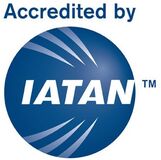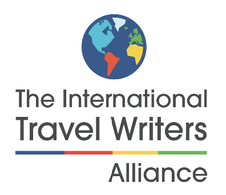|
written and photographed by by Marcia Simon, APR, CTA, copyright 2022 Some places you visit only once in a lifetime. Others keep calling you back. For outdoor enthusiasts in the Northeast, Acadia National Park, with its gateway town of Bar Harbor, can easily become a family go-to or an outdoor escape in Northeastern United States. Last time I visited Acadia was pre-COVID 2018. This part of Maine had already become known as a big tourist area rather than a hidden gem. Advisories warned that parking is limited so getting into the park early was, and remains, a key factor to beat the crowds. This time (August 2022) had a few new twists, one being the required $6 car reservation to drive up to the top of Cadillac Mountain. The view is spectacular – unless you arrive on a foggy morning when you may only be able to see for 10 feet in front of your nose. Cadillac Mountain marks the most eastern point in the US - so this is the first place in the country to experience sunrise. Another beautiful aspect of visiting Acadia is the change between seasons, so the experience is different depending on when you visit. Autumn colors are gorgeous with cooling temperatures during the day and nights that invite you to buy a warm fluffy hoodie from one of the shops in town. The best new addition to Acadia National Park is getting around by e-bike. While the area still attracts plenty of avid cyclists pedaling the paved roads and the ascent to the top of Cadillac Mountain, e-bikes make it easier for the rest of us. Especially nice is being able to take the e-bikes on the park's 45-miles of car-free walking and cycling trails, originally built for horse-drawn carriages. Today, horse-drawn carriage tours are offered by reservation. 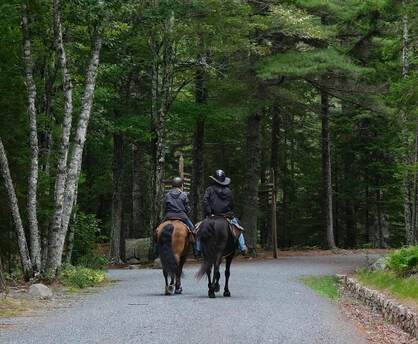 Acadia National Parks' 45 miles of carriage roads are shared by horses, bicycles and pedestrians – no cars. Acadia National Parks' 45 miles of carriage roads are shared by horses, bicycles and pedestrians – no cars. E-bikes are available from Acadia Bike in town or reserve one on Viator and pick it up at Acadia's Hulls Cove Visitor Center. People who prefer water over wheels or walking have multiple choices for exploring Acadia by kayak or sightseeing boat, increasing the chance of seeing bald eagles, puffins and seals among other wildlife. The only national park on the Northeast coast, Acadia's "carry-in carry-out" policy requires you to bring your own beverages and snacks. The Jordan Pond House Restaurant is the only location in the park for purchasing food and beverages. It's a lovely spot, especially sitting outside overlooking the pond. Walking around Jordan Pond is a popular activity. This gentle trail is well suited for families. The restaurant gets quite crowded, especially because bus tours often stop there, so it's best to go during an off-peak time, or wait and enjoy one of the many restaurants outside the park. First-time visitors to the area quickly learn that the park is Acadia; the town just outside the park is Bar Harbor. During visiting season, free shuttles run constantly throughout the day and evening between Bar Harbor's Village Green and several popular hotels closer to the park, making it very easy to drop into town for dinner. There are lots of choices and, for the most part, dinner reservations have become essential if you want to be seated before 8 pm. There are also free shuttles that stop at campsites and top tourist sites inside the park. Bar Harbor has a variety of accommodations. Many comfy B&Bs are within walking distance of the Village Green. These are ideal for couples because most have one large bed without the ability to accommodate more than two guests per room. For families and small groups of friends, the hotels along Eden Street have more options for room types, and several lower-priced motels are available in the nearby town of Ellsworth. The Bar Harbor Regency (also known as the Holiday Inn Resort Bar Harbor) is one of the few hotels in the area boasting waterfront accommodations with balconies, a heated outdoor pool, a large hot tub (especially inviting on chilly nights), along with two restaurants (one waterfront, one water-view) and a pool bar. It's also a shuttle stop, making getting into town super-easy. The CAT high-speed ferry to Nova Scotia docks next door. Gone are the days of heading to Maine for a great bargain on lobster rolls. With tourists in the mix, and restaurants making the most of their short tourist season before winter creeps in, 2022 lobster prices in Bar Harbor are higher than ever. ($36 for a lobster roll and fries!)
Getting into the park requires a parking fee of $20 per carload. The pass gets you in for a week-long visit so you can come and go on your schedule. A National Park Pass is a good value for families that visit multiple parks each year. For people age 62 and older, the lifetime Senior Pass is a fantastic value for a one-time $80 fee, and provides access to every National Park throughout the US. Marcia Simon is a writer, a traveler, and a travel advisor ready to help you plan your next trip. Connect on Instagram @friendlygrouptravel, Facebook @friendlygrouptravel, Twitter @friendsgotravel, or drop a note to [email protected].
0 Comments
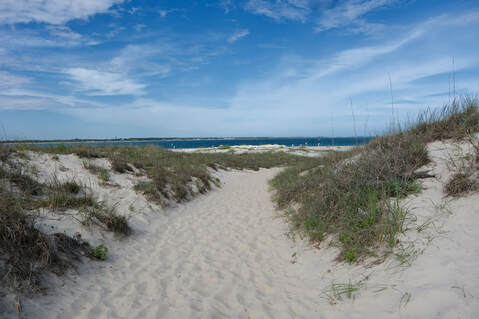 The beach is the main attraction along the Outer Banks National Seashore. The beach is the main attraction along the Outer Banks National Seashore. written and photographed by Marcia Simon , CTA, APR, copyright 2022 The ferry from Cedar Island on North Carolina's mainland to Ocracoke takes two and a half hours – just enough time to transition from "hurry up" mode to "island time." Ocracoke is the bottom of North Carolina's barrier islands known as the Outer Banks, or OBX. The ferry pulls into Ocracoke's island-vibe village where you'll soon see enticing small shops, intriguing seafood and BBQ restaurants - and a few motels that make it pretty tempting to stay and soak up the atmosphere. Being on a discovery mission, a lunch stop of fresh tuna and mahi-mahi sandwiches at touristy Howard's Pub and Raw Bar was enough of a break before heading north along Ocracoke's 16-mile stretch to the Ocracoke-Hatteras ferry. This crossing took an hour from point to point. Unlike the Cedar Island trip that allowed reservations and cost $15 for a car and two passengers, this ferry is free and operates on a first-come basis. Mid-afternoon in June was early enough to beat both the summer crowds and the day-trippers from Hatteras to Ocracoke who wait in long lines to return before dinnertime. Hatteras Continuing the journey up the Cape Hatteras National Seashore and hoping to stumble upon the kind of quaint B&Bs and inns that mark the New England coastline, the area was instead dotted with family-style motels and row after row of big beach houses on stilts. It was evident that house rentals are the big draw for families who come for a week or more to Hatteras and neighboring Frisco, with kids, beach toys, and sometimes grandparents in tow. The Outer Banks are all about the beach. These barrier islands stretch for 200 miles along the Atlantic Ocean off the coasts of North Carolina and southeastern Virginia. Mini-golf and ice cream are always within reasonable distance. For adults traveling without kids, it may be about the shrimp and oysters, both of which are local, fresh and delicious. Want a really fresh catch? Head to one of the outer Banks' five fishing piers or head out on a charter boat. Parasailing, jet skis and kayaks are all easy to find. But chilling at the beach is the #1 pastime here. Without a care or a reservation, the Surf Side motel in Nags Head, about halfway from bottom to top of the barrier island, came into view and had an available oceanfront room with a balcony. Sipping wine and watching sunlight fade away, that magical sound of ocean-meets-shore made for a relaxed evening, voluntarily disconnected from emails and nightly news. It's funny how you can overpack and then realize you brought long pants you'd never wear, but not enough shorts, and how suddenly you yearn for a new pair of flip flops. What a great excuse to pop into stores along the way. You'll see a chain called Wings (sometimes Super Wings), which is not a restaurant as Northerners may initially think, but a T-shirt, sunscreen, beach towel and souvenir stop. A little farther north is Kill Devil Hill, home to the Wright Brothers National Memorial. If you happen to have a National Park Pass, you'll get in for free; otherwise, it's $10 per person. If you have time, make it a point to stop. Orville and Wilbur Wright chose this spot to test their dreams of flight because its windy for lift off – and sandy for (hopefully soft) landings and inevitable falls during trials and development. Kitty Hawk, as the area was known when the Wright Brothers came here in 1902, is today known as Kill Devil Hills. In 1903 the brothers achieved success with the first-ever powered aircraft. Orville flew and controlled the plane. And this marked the very beginning of airline travel as we know it today. The Sanderling in Duck Duck is a town toward the northern end of the Outer Banks, and The Sanderling is a lovely hotel about four miles north of Duck's town center, wedged between the Atlantic Ocean and Currituck Bay. The Sanderling is truly the only resort of its kind in OBX, with 120 guest rooms and suites, plus house rentals (accommodating from 8 to 16 guests) and views of the ocean or the bay. Two outdoor pools (one for families and kids; the other adults-only), one indoor pool, a spa, outdoor hot tub, fire pits, plenty of beach chairs and umbrellas, and bike rentals make this a comfortable place to spend a few days. Restaurant choices include the Lifesaving Station, which serves three meals daily in a casual, family-style atmosphere. The cuisine is southern coastal and regional using locally sourced ingredients when possible. It has a friendly bar, too. Fine dining at the Sanderling's Kimball's Kitchen features floor-to-ceiling windows facing west to watch the sunset. The third restaurant is the outdoor Sandbar where bare feet are acceptable and frozen drinks are specialties. From top-quality salads to burgers, it's a convenient spot to grab a bite near the pool, the beach, or your room. Although not part of The Sanderling, The Paper Canoe is a highly recommended restaurant directly across the street. It's a favorite with locals, so make a reservation far in advance if you want to watch the sunset and enjoy a creative menu. By the way, a sanderling is a bird – a type of sandpiper that runs up and down the beach chasing waves. Sweet. Duck – The Town – and Beyond To get to the Sanderling, you'll pass through the town of Duck, known for its boutique shops and low-key restaurants. Duck is cute. 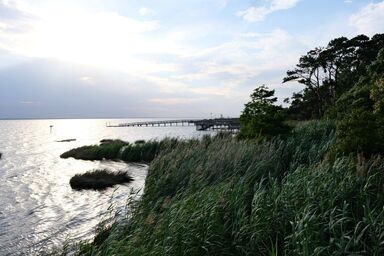 Walking along the boardwalk in Duck involves lots of scenery like this. Walking along the boardwalk in Duck involves lots of scenery like this. The town park offers one of the access parking lots to the boardwalk, which is about a mile long, and weaves its way along the coastline, dipping in and out of retail clusters, pubs and ice cream stands. Venturing north of Duck you'll find Corolla, a lively yet laid back tourist area. Take a 4WD beach Hummer tour to see the wild mustang horses on the northernmost beaches of the Outer Banks. Another option to see the horses is by kayak tour. The mustangs are descendants of domesticated horses brought to the area in the 1500s by Spanish explorers and left behind — either by choice or accident. They are technically now wild. By the way, wild horses can also be seen on Ocracoke Island just south of the Hatteras-Ocracoke ferry docks. Leaving the Outer Banks to return north on the mainland from Corolla or Duck, requires a short drive south to Route 158 just north of Kitty Hawk. This goes over the Wright Memorial Bridge, the most-travelled route to and from OBX. You'll pass H2OBX Waterpark, which screams fun and makes you wish you had made time to go there for a great family fun day. The closest commercial airport to the Outer Banks is 60-miles away in Norfolk, Virginia. Most people pack the car and make this a road trip. If you plan to go in summer, reservations in advance are highly recommended. Marcia Simon is a travel advisor, travel writer and founder of FriendlyGroupTravel.com, specializing in customized trips for families, small groups and solos. Connect at facebook.com/friendlygrouptravel, Instagram @friendlygrouptravel, Twitter @friendsgotravel or call 860-399-0191. 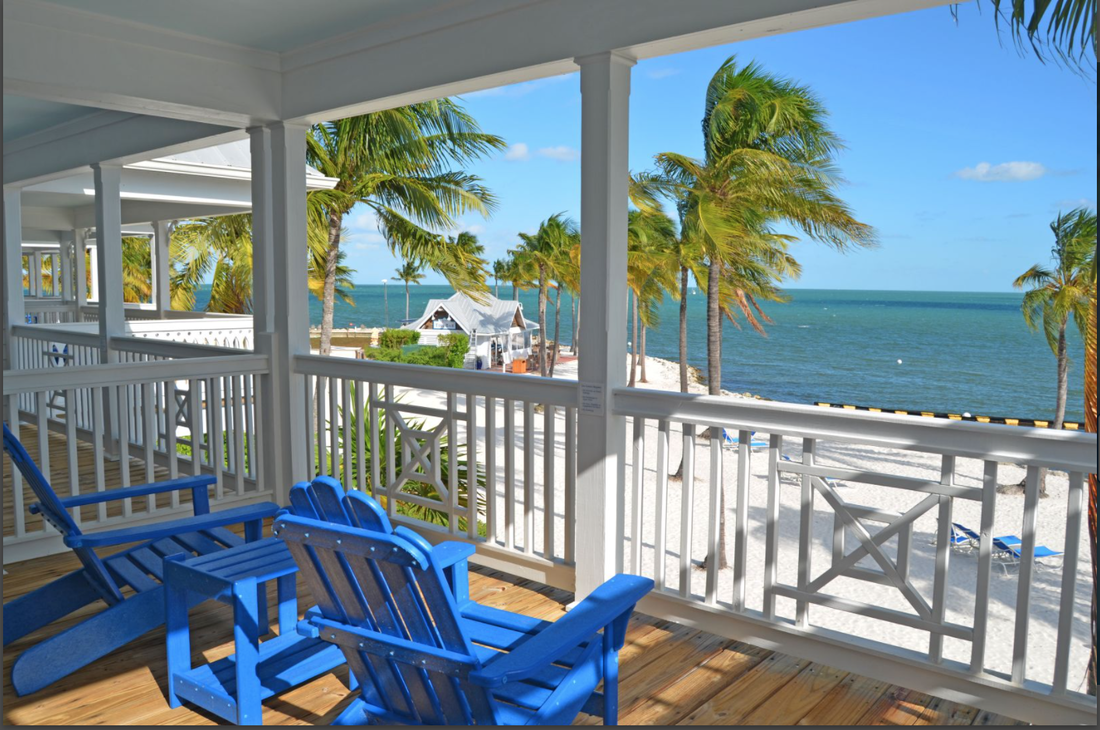 beach house in the Florida Keys beach house in the Florida Keys by Marcia Simon, CTA, APR It's been a weird school year for students and their families. Understatement. With graduations just around the bend, finding the right kind of celebration to honor your favorite student, is particularly challenging amid the lingering pandemic. The upside is that people are getting vaccinated, and travel is becoming safer. With this in mind, here are a few ways to celebrate this year's graduation, which may mean making up for lost time or finding a reason to get the whole multigenerational family together. For lasting impact and memories that will last a lifetime - hands down, the answer is travel – whether you're celebrating a graduation or just need to get the family together. 5 Family Travel Ideas to Celebrate a Graduation 1. Rent a house or villa Not quite ready to step into a full return to post-COVID activities? Villas and house rentals are very popular this year. Some have minimum-length stays; others allow you to stay for a quick weekend, an extended weekend or longer immersion. Suites at hotels that provide deep sanitized cleaning between guests add a layer of safety. Get an exclusive package at Tranquility Bay in the Florida Keys: like a 3-bedroom waterfront beach house with full kitchen, living room, oceanfront patio, laundry facilities, three swimming pools, mini-golf, snorkeling and family activities on premises, close to restaurants, fishing boats, bicycling and more. 2. All-Inclusive resort There's something for everyone of any age. The kids can enjoy a sailing lesson while parents try the stand-up paddle boards, and grandparents relax poolside after a morning yoga class. Gather for meals and excursions at an all-inclusive that matches your family's personality. ClubMed has new locations with larger family accommodations and optional activities all day long. Hotel Xcaret, in Mexico near Tulum, includes zip lining, water parks and the famed Xcaret eco-park. 3. Walking tours Create your own private guided group or choose a self-guided option, complete with maps and local assistance if you need it. Whichever you choose, your breakfast and dinner will be included (with recommended lunch options for self-guided trips.) Luggage is transported every morning to your next destination at an authentic boutique hotel or B&B. What a fantastic way to spend family time together outdoors. Itineraries are available within the US and abroad with Easy, Moderate and Challenging levels. 4. Boat Spend a week with your family on a private catamaran, which sails flatter than a monohull. Choose to have a captain and cook, so you are completely free to do as much or as little as you want. Pull up on beaches to explore villages, cultural sites or local culinary adventures.. Bahamas and Virgin Islands are popular destinations for ideal weather and crystal clear turquoise waters. 5. Road trip Pack the car, fill the cooler and head out. There's no telling if Americans will be able to cross the Canadian border this summer, pending COVID-restrictions. Explore Maine with its coastal communities, islands, or inland lakes and rivers (family rafting!). Or head down the Blue Ridge Parkway to the Smokey Mountains, filled with opportunities for outdoor exploration. If you have more time, Add Nashville for a diverse music and food scene - and a must-do experience at the Grand Ole Opry. This summer is expected to be very busy at the National Parks, so book as early as you can. Maybe this is the summer to get a bike rack and head to the Finger Lakes. Not in shape for the hills? No worries - ebikes are readily available at rental shops. You might also consider a fly-drive experience, or renting a camper. Campers and RVs have gone upscale since COVID scared people away from hotels. As with all travel plans mid- and post-pandemic, it's very important to understand the cancellation policies of any hotels, airlines and travel vendors you choose. An informed travel advisor can help navigate these changing conditions and provide peace of mind should your travel plans need to change. Need help planning your family getaway? Call 860-399-0191 or email [email protected]. Initial consultations are always free. 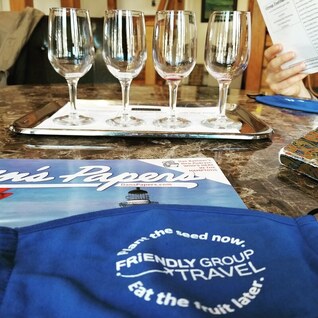 by Marcia Simon By industry standards, the North Fork of Long Island is still in its winemaking infancy. The region's viticulture reputation has been steadily on the rise since 1973 when its first commercial grape vines were planted. The region now boasts about 55 wineries and vineyards. Unlike Connecticut, where driving takes all day to follow the wine trail from Stonington to Litchfield, a 25-mile span along eastern Long island's north coast allows for easy stops for tastings, picnicking and musical entertainment in season. During a COVID-winter, the scene is surely different and very quiet mid-week, which is attractive to people more interested in the wines themselves. It's a quick getaway that is as COVID-safe as you make it. The North Fork is as laid back as Long Island gets. Its popularity as a destination is growing as the quality of its wines and oysters are added to restaurant menus across the country. This unpretentious east end of Long Island is less than 100 miles from New York City, and less than 90 minutes with a car on the Cross Sound Ferry from New London to Orient Point. The water, air and soil trifecta Surrounded by Long Island Sound, the Peconic Bay and salt water from the Atlantic Ocean, the North Fork is buffered from both warm and cold fronts. This unique climate protects grapes through a long growing season and gives winemakers more control over their harvests; they can pick their fruits at peak times for ripeness. The region's most popular varietals include Bordeaux-style reds – Cabernet Franc, Cabernet Sauvignon, Merlot and Malbec from which winemakers create their signature blends. Sauvignon Blanc and Chardonnay are popular whites, but even more inviting than a soft white is a glass of North Fork Rosé or Gewürztraminer, which many think of as sweet wines, but after tasting a few, it's safe to say that many are refreshingly light and dry. My two travel companions and I enjoyed tasting flights at multiple vineyards during a January road trip along Routes 25 and 48 between the towns of Peconic and Jamesport. We visited the grounds of several others, too to get a feel for their upcoming in-season outdoor scene and COVID-safety. Featured Vineyards Starting at Pellegrini Vineyards in Cutchogue, we were the only tasters at 12 noon. We tried four varietals and surprisingly preferred the easy-drinking, dry 2019 Rosé. Pellegrini's tasting room mixes old world charm with modern open space and technology. Guests are welcome to walk over to the adjacent building to view the stainless steel fermentation tanks, behind glass walls, used in the winemaking process. Pellegrini's winemaker is Zander Hargrave, son of Alex and Louisa Hargrave who were pioneers of the North Fork wine industry with their vines back in 1973. The largest of all the Long Island vineyards is Pindar Vineyards in Peconic, This family owned-and-operated vineyard is run by siblings Pindar, Alexander and Alethea Damianos. A fourth sibling, Jason, was an integral part of the family operation, too, and later opened Jason's Vineyard in Jamesport. An unfortunate car accident took Jason's life in 2015, and the Damianos family now operates Jason's as well as Duck Walk in Southold, which their father acquired in 1994. Remembering a blueberry port wine I tasted years ago at Duck Walk Vineyards, my travel companions and I stopped in to try it again. We also tried their Boysenberry Fruit Wine, which is not a port, but a very tasty after-meal sipper. The family patriarch, Dr. Herodotus Damianos, known as Dr. Dan, was an internal medicine physician by profession when his winemaking vision led him to purchase 36 acres of potato farmland in 1979 on which he planted his first Chardonnay grapes from California vines. Today, Pindar's 500 acres yield 17 varieties of grapes and more than 70,000 cases of wine every year. As large as it is, Pindar Vineyards' comfortable atmosphere provides a warm environment for tasting their popular reds such as Cabernet Franc, Pythagoras. We particularly enjoyed their Cabernet Sauvignon Reserve and Cabernet port. Pindar is among the pioneering vineyards of the North Fork sustainable wine movement away from chemical fertilizers and pesticides. Their massive composting operation combines lawn clippings from dozens of local landscapers, fish parts from a local seafood wholesaler, and their own grape skins. Tons of this rich organic compost is spread over the vineyard's sandy soil to enrich the grapes. COVID-19 Precautions Although some Vineyards are closed for winter, or operate on limited hours during the pandemic, the wineries we visited all took their safety precautions very seriously. Some offer tastings by reservation only; others accept drop ins, with occupancy limits. Mid-week in January, the tasting rooms were practically, and sometimes literally, empty; we felt very COVID-safe the entire time. Visitor traffic picks up on weekends, we were told, so mid-week is advantageous. Masks are required everywhere to keep staff and visitors safe. Travelers who want to venture out with their bubble (up to six people) before the crowds return for spring season can rent one of the Bergen Road Bungalows at Macari Vineyards. These private, cozy heated tents provide your group with four hours of relaxed tastings from the selection of flagship Macari wines paired with a locally prepared gourmet lunch overlooking the grape vines on this 180-acre vineyard. An Overnight Delight After tasting wines at four vineyards, we were ready to check in to the Sound View Hotel in Greenport, three miles west of the village, and a short ride from most vineyards. Arriving before sunset, we watched the sky's changing colors from the deck of our room. If you didn't know its story, you'd drive by Sound View, thinking this is still a 50s-era roadside motel. Now owned by Eagle Point Hotel Partners, renovations began a few years ago and are ongoing. Simple, rustic and modern all at the same time, this hotel feels beachy and upscale at the same time. All rooms provide waterfront views of Long Island Sound. It's so close to the water that you might get sea spray on your windows during a storm. The hotel's Halyard Restaurant had limited winter pandemic hours. However, the to-go menu includes plenty of tempting items available for room delivery. From chowder to chili, turkey-bacon wraps to fish and chips, local sea scallops, salads and a kids' menu. That night we were able to decipher the beacon patterns from Old Saybrook breakwater and the red blinking light that marks the channel by Duck Island in Westbrook. It's 14 miles across the Sound from this location and the winter wind on the water kept the sky clear across to Connecticut.
From Potatoes to Grapes Long before the first grape vines were planted on the North Fork, its rich fertile soil attracted potato farmers who moved east when suburban sprawl started to take over the land closer to the New York City. In the 1940s, about 80 percent of all farming on Long Island was dedicated to potatoes, according to potatonewstoday.com. Potato farming still exists on the North Fork. In fact, North Fork Potato Chips is a thriving business. Farm stands serve many of the local restaurants with fresh vegetables and fruits and season, and the oyster farms ship nationwide. But it's the grapes that are the North Fork's current attraction from a growing number of visitors. Marcia Simon, CTA, APR, is a Connecticut-based travel writer and advisor. Contact her at [email protected], on Instagram at friendlygrouptravel, facebook.com/friendlygrouptravel and Twitter @friendsgotravel. 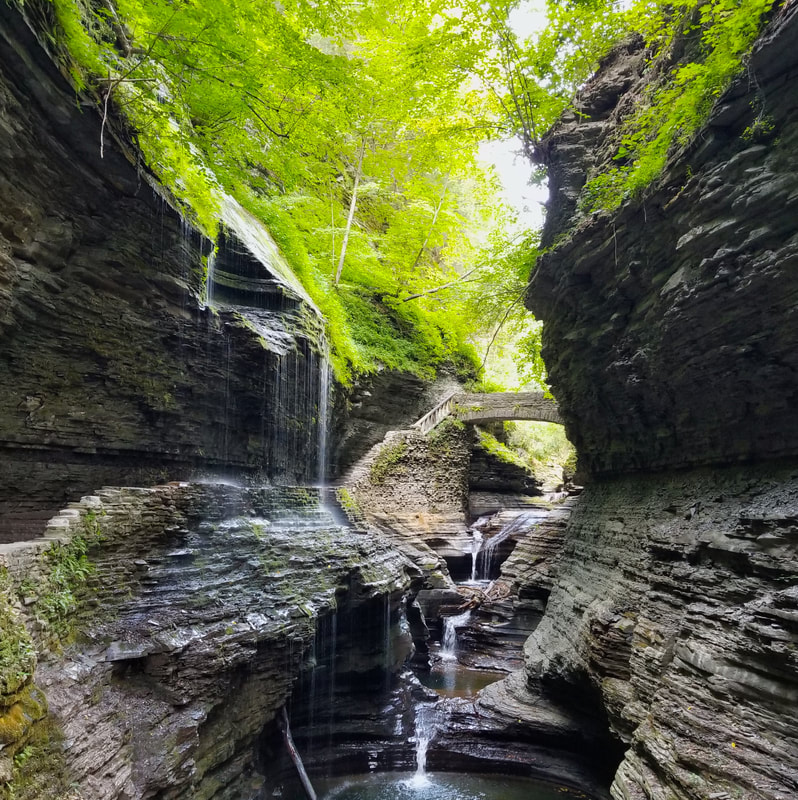 Rainbow Falls at Watkins Glen State Park Rainbow Falls at Watkins Glen State Park by Marcia Simon, CTA, APR Everyone needs a summer break, even during COVID-19. Having seen gorgeous photos of Watkins Glen State Park, it’s been on my hiking bucket list, so we loaded up the car on a Sunday morning and headed to the Finger Lakes. Traveling midweek instead of weekends means fewer crowds, better hotel prices and less traffic on the roads. Our first destination was Mount Morris, NY, where we checked into the Allegiance Bed & Breakfast, a 46-room Greek Revival mansion. Each of eight guest rooms is named for a local historian from the 1800s. The Allegiance B&B itself is named in honor of Francis Bellamy, a neighbor, who wrote the Pledge of Allegiance. Owners Steve and Glenda Luick are transplants from Los Angeles who dreamed of living their retirement years running a B&B where they could enjoy four distinct seasons and lots of country comfort. When they saw the building, they knew instantly that this was their place. What they didn’t know until after they moved in was that their home would ultimately develop a reputation as one of the most haunted houses in the world. The spirits are friendly and make themselves known only occasionally, but never to intentionally frighten anyone. Steve greeted us, wearing his COVID-safe mask, making sure we were wearing ours, and showed us around before taking us up to our room on the second floor. This is a great location for hikers who want to spend a day at Letchworth State Park. The B&B is located one mile from the park’s north entrance. There’s not a whole lot to do in the area, especially during COVID times when so much is closed. That’s okay, though. The B&B oozes laidback elegance, and after a short walk into town for a casual dinner, we found that sipping a glass of wine on the front porch was the perfect way to unwind before heading up for a comfy snooze. Letchworth State Park received the 2015 USA Today Readers’ Choice Award for Best State Park in the United States. It runs about 17 miles from top to bottom on either side of the Genesee River. Aside from the north entrance in Mt. Morris, you can enter the park from the south (Portageville) and west (Castile – the most popular gateway). With 14,000 acres and 66 miles of hiking trails, the Upper and Middle Falls are most popular, and most crowded, so arrive early to enjoy walking while remaining socially distant. The water level in the Genesee River, due to a hot, dry August, was relatively low. I imagine that in spring after the snowmelt, the park’s 30 waterfalls would be magnificent; autumn’s foliage would be simply breathtaking. Letchworth State Park is called the mini Grand Canyon of the East. The Genesee River has created a deep gorge bound on either side by cliffs higher than 500 feet in spots. White water rafting through Adventure Calls Outfitters was closed, possibly due to COVID-19 or possibly the fact that the water level was pretty low. Class 1 and 2 rapids make this a perfect activity for families with children or first-time rafters. You can find overnight accommodations inside the park at the Glen Iris Inn and its affiliated properties, with everything from motel-type cabins to balcony suites overlooking the Middle Falls. Make reservations early because the convenient location attracts tourists. Campsites can be reserved through the park. Letchworth State Park and Watkins Glen State Park both offer free admission this summer, with a modest parking fee for a full day. Both parks prohibit swimming in the gorges, partly due to safety concerns. Hiking is on well-defined trails high above the waterline. However, both parks have big, clean, family-friendly swimming pools. Aside from hiking, farming and incredibly bucolic scenery, the Finger Lakes are known for their vineyards, so off we went to explore the wine trail. Canadaigua Lake may have the most well-known wineries. There’s also a wine trail around Cayuga Lake. We headed for Seneca Lake, which has more wineries, almost 70, than any other lake in NY State. We started at the top in Geneva, with plenty of time to hit up three vineyards along the lake on our way down to the village of Watkins Glen at the bottom. First Stop on the wine trail… Belhurst Castle Winery, Inn and Restaurant (They also produce craft beers) overlooking the lake in Geneva. I was wondering how COVID-safe the tasting would be, but when I walked over to the tasting bar and picked up the menu, I was quickly scolded for not checking in with the host, and reminded that they’d now need to re-sanitize those two seating areas for someone waiting their turn. Oops. OK, no worries. I was happy to see the standard of cleanliness. Second Stop… Keuka Spring Vineyards in Penn Yan, proud to share their unoaked Seyval Chardonnay, Riesling and ice wines. The Finger Lakes are known for sweet whites, although the dry Riesling was quite nice. Jim at the bar was happy to tell us about the ice wine process. He collected our names and phone numbers for contact tracing, “just in case we need to notify you,” he said. That was reassuring. It was clear that extra space had been added to keep tasting parties (of two) distanced from each other. Glenora Wine Cellars in Dundee was next, with a restaurant and modernish accommodations overlooking the lake. We were just about 10 meandering minutes away from our destination – Watkins Glen Harbor Hotel at the bottom of Seneca Lake. If you want to stay on the water, this seems like the only choice for Watkins Glen. Because of the state park, there’s a demand for modest motels and camping. The park has 54 electric and 241 non-electric campsites. A few B&Bs seem interesting. This is the only large hotel with a dock for transient boats and indoor/outdoor waterfront dining. Arriving at Watkins Glen State Park before 8 am the next morning gave us sample time for hiking and photos before the crowds started rolling in around 9:30. For coronavirus safety, the famous Gorge Trail, with 19 waterfalls, is one-way up and then one-way down on the Indian Trail. It’s a good idea. All together it only takes about an hour and a half so we drove the two-minute ride to the other side of the river and hiked the South Rim as well… still getting back to the hotel in time for lunch. (Normally there’s a shuttle that runs between the park’s three entrances, but it’s not operating during COVID-time.) We discovered a small casual restaurant down on the waterfront, the Village Marina, that seems to be a favorite spot for locals. They have sandwiches and salads, plus a full page of local wines by the glass. Two miles from the hotel is Castel Grisch Winery. Their COVID-safe tasting flight is pre-poured, and you take the five samples outside where there’s plenty of space. Filling out contact tracing forms was required. All in all, we packed a lot into a four-night getaway, but it never seemed too busy. Driving around on quiet back roads was a real flashback to less complicated times, and just the break I needed to ease the anxieties of the never-ending coronavirus era. Other places to visit in Watkins Glen: Schooner True Love –for sailing experiences such as Sails & Ales and Wine & Winds on the Water. Unfortunately, they are not operating this summer due to COVID-19, but you can still buy a T-shirt online to show your support. Seneca Cheese Company – for artisan cheese, charcuterie, locally crafted wines and beers Watkins Glen International speedway – “The Glen” is closed for racing this summer due to COVID, but hoping to open to host the October 30 Finger Lakes Beer Festival featuring over 40 New York State breweries, distilleries and cideries. Marcia Simon, CTA, APR, is a travel advisor, travel writer and publicist. She plans small group and independent journeys as owner of Friendly Group Travel. During COVID-19, she shares safety information and updates. Visit friendlygrouptravel.com or connect at facebook.com/friendlygrouptravel Twitter @friendsgotravel Instagram @friendgrouptravel. by Marcia Simon, CTA After five months of diligent self-protection against the coronavirus and pining for travel, it was time to get away, but where?
From the Connecticut shoreline, it’s a two and a half hour drive to Cape Cod, adding another hour for the forty-mile ride to the tip. This is Provincetown, the Mayflower’s first landing in the New World in 1620 (Yes, the Pilgrims stopped here for five weeks before sailing on to Plymouth. Or so it’s told.) P-town, as it’s known, is a welcoming haven for artists and the LGBTQ community. Here you can be yourself and feel free… as long as you wear your face mask. Signs are posted regarding the mandate to wear a face covering on Commercial Street, the main tourist strip lined with restaurants, ice cream shops, t-shirt and souvenir stores… as well as colorful nightlife in “normal” times. As of mid-July, for the most part, bars, night clubs and cabaret shows are closed, although the Crown and Anchor’s popular cabaret show premiered its reopening this month with scaled-down outdoor seating. Numerous art galleries and restaurants are open – with limitations. Curbside take-out is available as well as limited indoor and outdoor dining. Provincetown offers lots of safe-looking restaurant choices that provide ocean views or a clear shot of the activity along Commercial Street. Enjoy patio dining with some of the freshest fish and lobster you’ll find anywhere, or walk up to a take-out stand and grab a comfortable spot on the beach overlooking Mac Millan Public Pier, the meeting place for ferries, fishing boats, and whale-watching tours to Stellwagen National Marine Sanctuary. Provincetown is one of the world’s natural deep water harbors ~ attracting boats of all sizes. Whale watching, fishing and sailboat trips were operating – limited to 50% occupancy as of mid-July 2020. The Pilgrim Monument and Museum, one of the most popular tourist stops offering a magnificent bird’s-eye view – with 116 narrow steps taking you to the top of the tallest all-granite structure in the United States – was closed during my July visit. So was the adjacent Provincetown Museum. Visitor Centers in town and at the National Park were closed as well. However, public restrooms were open and clean. Because the bars are closed, night life fades early, with many restaurant kitchens closed by 9 pm. Phase 3-Step 1 reopening requires no more than six people at a table in restaurants, so large parties and family groups will be split up. To cut back on surface contamination, most restaurants ask you to scan a QR code either at the hostess station or at your table to download the menu to your phone. If your server sees that you’re sadly tech-deficient, you’ll be offered a paper menu, but shared surfaces in general are out. Ketchup, mustard, salt and pepper are served in single portion packets. A Note About Lobster Rolls New Englanders know all about lobster roll preferences. In Connecticut, for instance, a perfect lobster roll is served hot, on a buttered, toasted (or grilled) hot dog bun with a portion of melted butter on the side for dipping. However, in Provincetown, if you don’t specifically ask for a hot lobster roll, you will most likely get a cold lobster salad, very little mayonnaise, and usually with a leaf of lettuce on a hot dog bun. And if you order it hot, there’s a good chance your bun won’t be toasted. Just sayin’. Exploring the coastline Parking in P-town can be tight. Walking lets you meander, and offers lots of opportunities to take photos you might otherwise miss. Bicycling is popular, with ample inventory at the local bike shops in and around the town. Because the terrain is basically flat, cycling is easy, and what’s better than bicycling along a long stretch of coastline? The Cape Cod National Seashore has bike paths ideal for families with young children; these are generally protected by the shade of the forest canopy. The National Seashore is a pristine 40-mile stretch of beautiful sand, dunes and pitch pine forests. We hiked one of the park trails in nearby Wellfleet. The 8.8 mile-loop zig zagged between shady pine-needled forest and sandy beach. While pets are welcome in the park, there are stretches along the beach where the habitat is protected for piping plovers and other endangered species of birds. These are no-pet zones (because dogs tend to scare the birds and disturb their natural environment.) Two tips: 1. While some of the trails run through a shaded forest, parts take you onto the beach, which is gorgeous, but the sand can be very hot on bare feet, and the sun can feel scorching. 2. It’s easy to access Jeremy’s Point and sandbars during low tide, but the tide comes back in quickly, making for a wet walk back. If you can catch a morning low tide, it would be a great time for a summer hike. This area would be magnificent in autumn’s cooler weather. We encountered very few people along the hiking trails and, for the most part, were able to keep our face masks in our pockets. Race Point Beach was uncrowded enough to allow for easy social distancing. Walking from the parking lot to the stretch of beach along the narrow sandy path was a bit more trafficked, so masks are recommended for that, but once you’ve staked out your spot, the mask is not necessary if you are comfortable with the safety of your travel companions. Accessing many hiking trails in the park is free. But if you want to park to access the beach, the fee is $25 per car. We spent a half day at the National Seashore’s Race Point Beach. Umbrellas are highly recommended to protect you from the intense summer sun even when the ocean breeze is blowing. And the water is cold. Very refreshing, but cold. To Go or Not to Go? Assessing Your Personal Risk Whether to venture out or stay home is a personal decision, based on your risk factors, overall health and immune system, others in your household who may be high risk, and how careful you will realistically be with safety, masks, sanitizing and social distancing when you're out and about. Overall, Provincetown seems surprisingly quiet this summer. Even the ride over the Bourne and Sagamore Bridges that cross the Cape Cod Canal from the mainland were delay-free, which is a true rarity. Crowds will likely build through the rest of the summer. Midweek is always less crowded, and lodging less expensive, than weekends. This was a fun 3-night getaway. Just what I needed to renew my energy. I felt safe – because I was very proactive about my personal safety, social distancing, sanitizing, and wearing a mask in public places. Visitors, residents and people who work in the Provincetown community embrace masks. In fact, the souvenir shops have some pretty unique and fun mask designs. (The t-shirts are great, too.) If you are part of the anti-mask culture, do not go to P-town. Stay away. This is a community that is doing its best to stay safe; if you do not support that, you shouldn’t be there. If you love long walks on the beach, early mornings on the water, sunsets over the horizon, lobster and an open-minded, nonjudgmental vibe, go and support the economy of a town that relies heavily on tourism. One waiter, concerned about his own safety while being engaged with customers all evening, summed it up nicely: “Of course we want people to come here. That’s how we make our living. On the other hand, we really don’t want people to come if it increases our risk for coronavirus.” So wear your mask. Bring sanitizer. It’s a matter of your personal safety and respect for people around you – making your getaway enjoyable and safe. For more information about Provincetown and COVID-19 travel updates, visit: https://ptowntourism.com/ https://www.visit-provincetown.com/ https://www.provincetown-ma.gov/1313/COVID-19-Coronavirus-INFORMATION-PAGE Marcia Simon, CTA, APR, is a journalist, publicist and travel advisor who gets around as much as possible, and plans small group and independent journeys as owner of Friendly Group Travel. Connect at facebook.com/friendlygrouptravel, twitter @friendsgotravel and Instagram @friendgrouptravel. 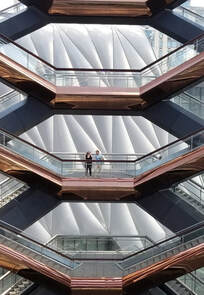 by Marcia Simon, CTA, APR You’ve got to love New York. Where else do they decide to build a new neighborhood and in couple of years come up with Hudson Yards, aptly named because it’s on the Hudson River overlooking the West Side Yard where Long Island Rail Road trains are stored between shuttles back and forth between “The Island” and Penn Station. The new neighborhood is billed as “a triumph of culture, commerce and cuisine – a place to live, work, and play.” Skyscrapers housing apartments, high-end retail shops, restaurants and a new luxury hotel are all in the works. Oh, they added a subway stop at Hudson Yards to accommodate the traffic. And if people aren’t flooding in yet to shop, visitors are surely interested in The Vessel. Contemporary urban designer Thomas Heatherwick created the bronzed steel and concrete Vessel just so people can climb the 2,500 steps of this 16-story recreational sculpture. It’s free to explore with a ticket you can get online or at one of the kiosks at Hudson Yards, although you may have to wait an hour or two for an available time since the number of people at one time is limited. There’s an elevator that makes the Vessel accessible for everyone. The Vessel is located at the north end of New York’s popular High Line, a public park built on a historic rail line above the city’s west side streets. It runs from 34th Street near the Javits Center to Gansevoort Street, three blocks south of 14th Street. Along the way you can have a seat on one of several benches, or stop for coffee, a smoothie, ice cream or other snacks. Kids seem to like The High Line as much as adults. For anyone who hasn’t walked the High Line recently, new “spurs” are being added as viewing areas and urban woodlands with a mix of grasses, perennial flowers and shrubs, all of which are native flora. Marcia Simon, APR, CTA, is a travel advisor, public relations practitioner and principal/owner of friendlygrouptravel.com. Connect through facebook.com/friendlygrouptravel or [email protected]. |
AuthorMarcia Simon, CTA, APR, has been exploring new places since she was 17 years old and traveled around Europe on a Eurailpass with her best friend. Decades later, she still considers travel the best investment of time and money she's ever made for herself and her family. Categories
All
|
|
SIGN UP NOW FOR OUR NEWSLETTER WITH TRAVEL TIPS, IDEAS AND SPECIAL OFFERS
|

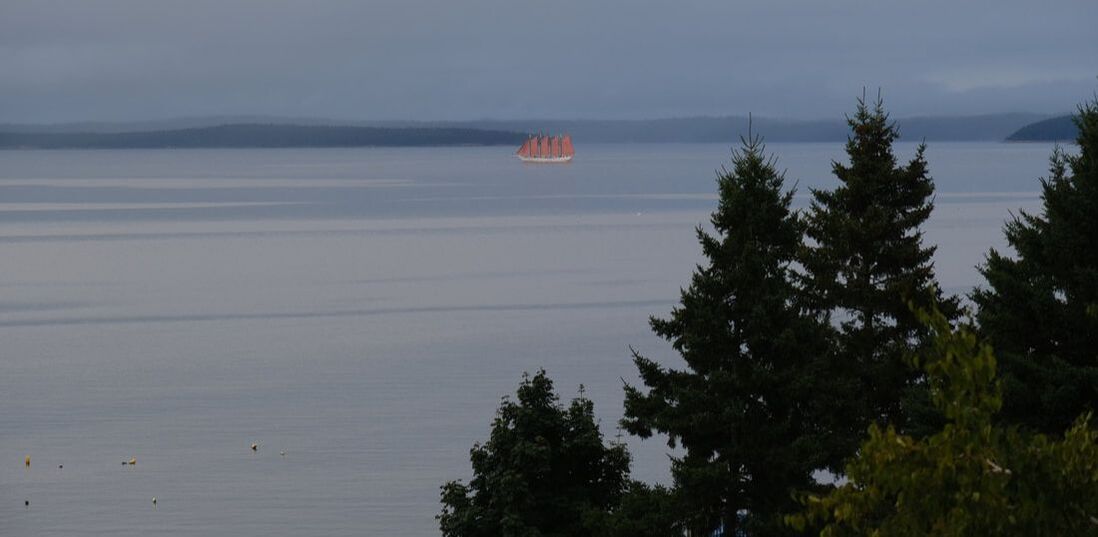
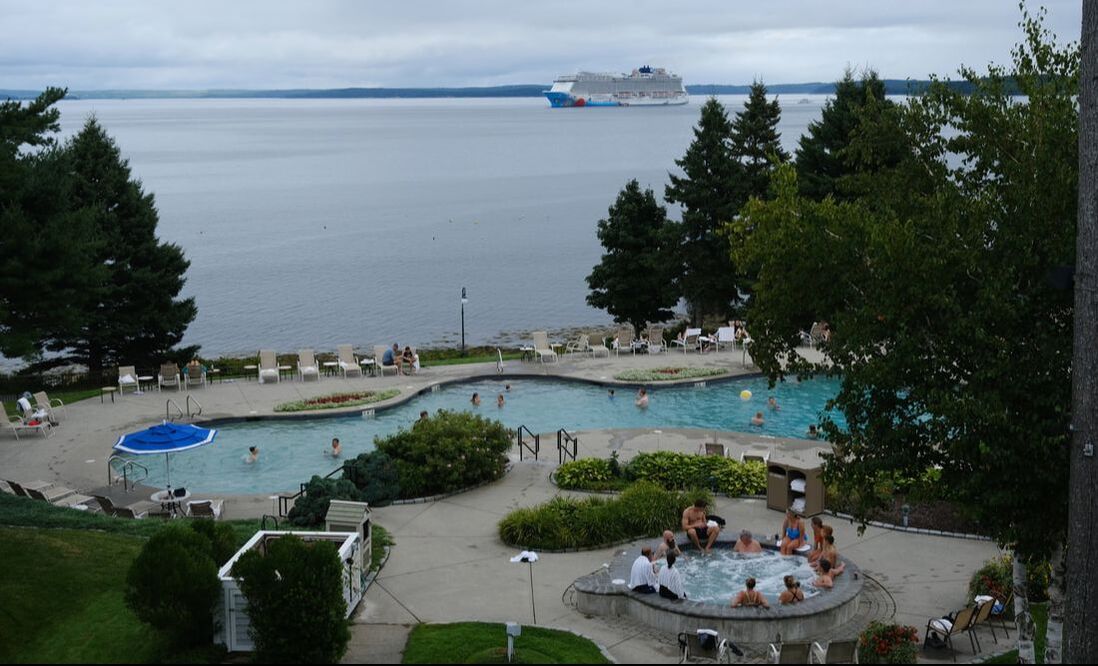
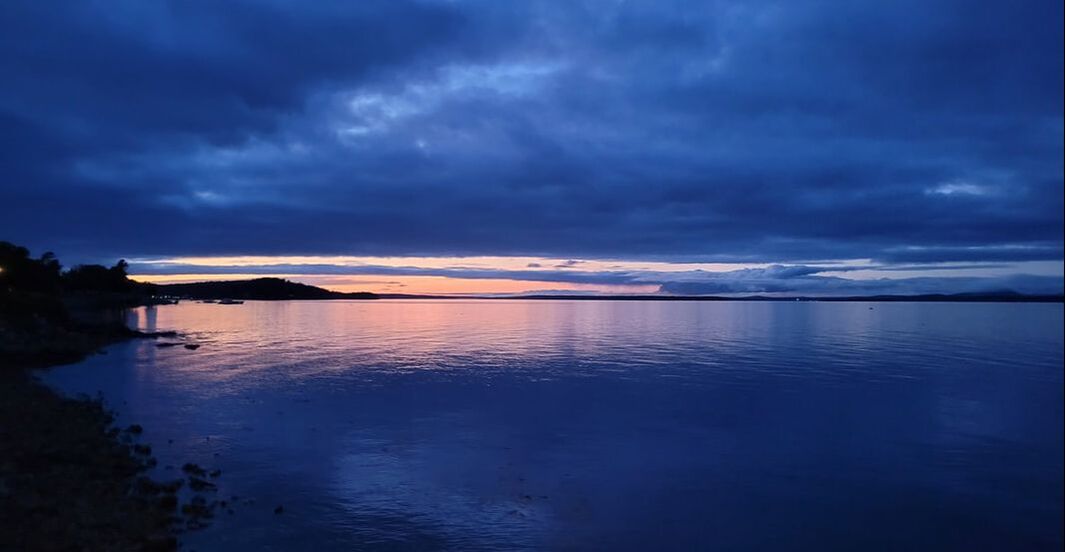
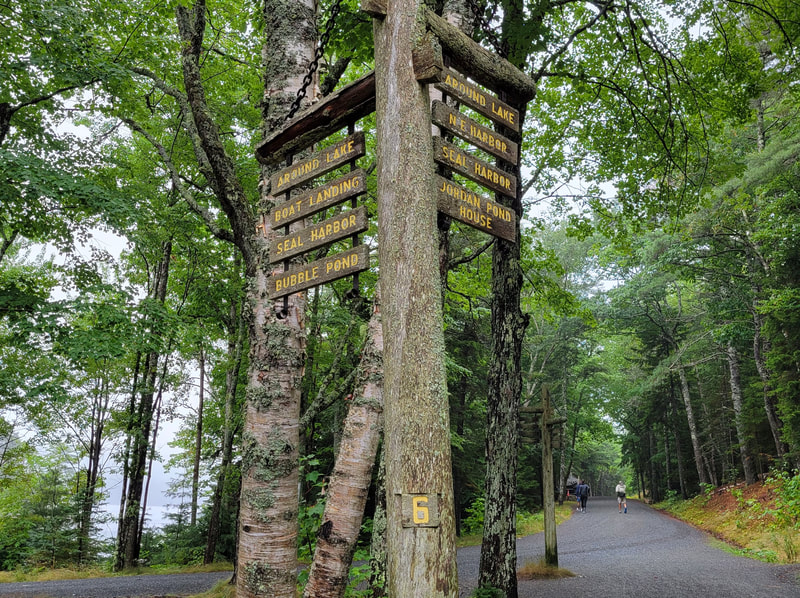

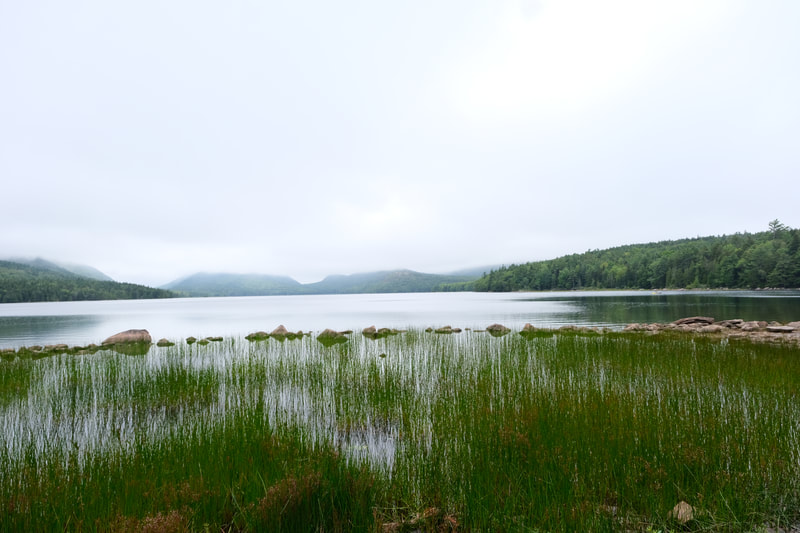
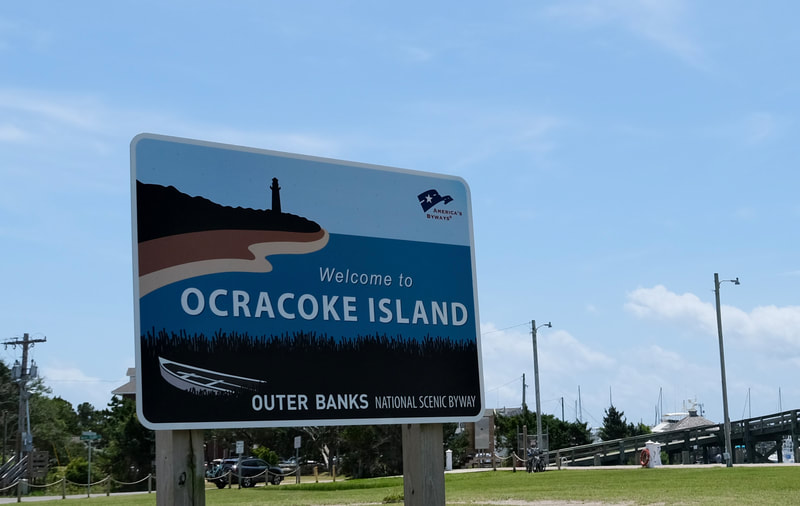
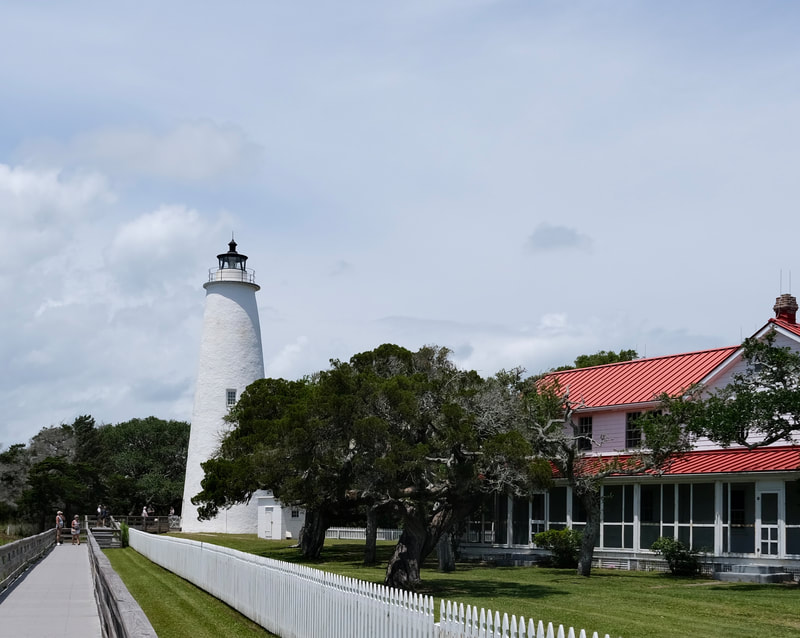
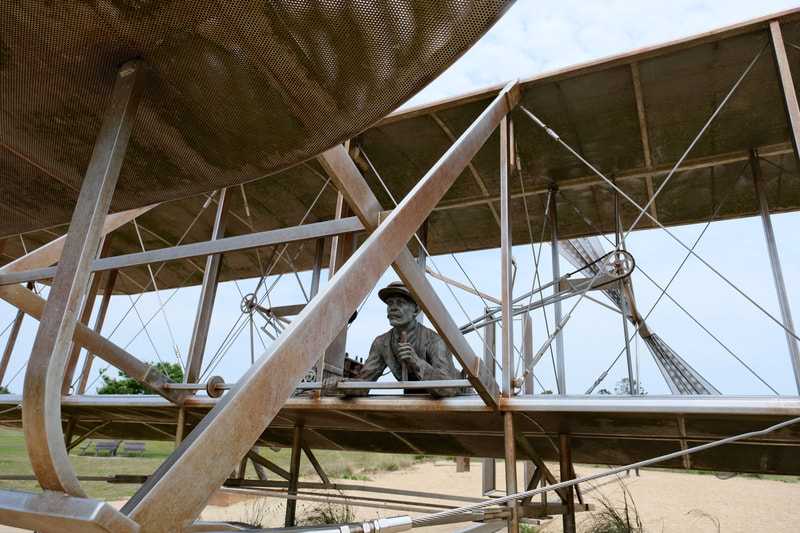
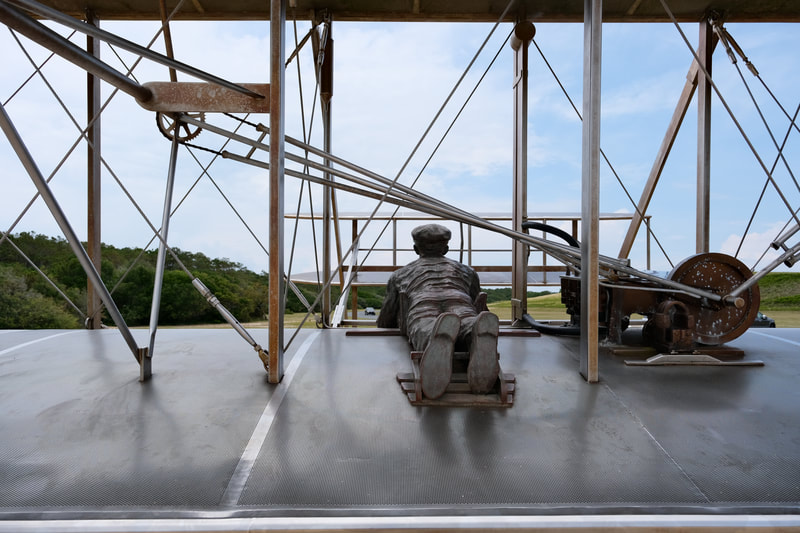

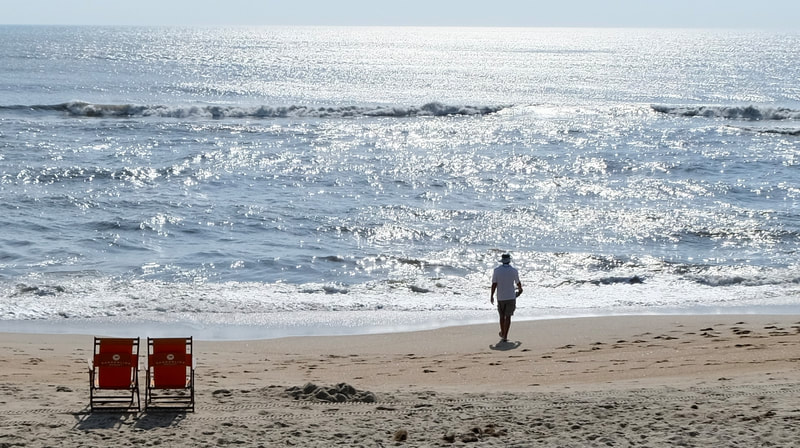
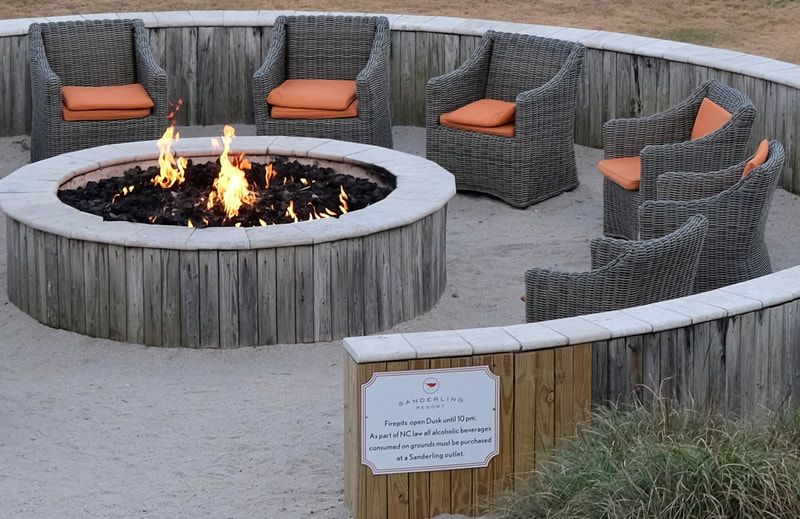

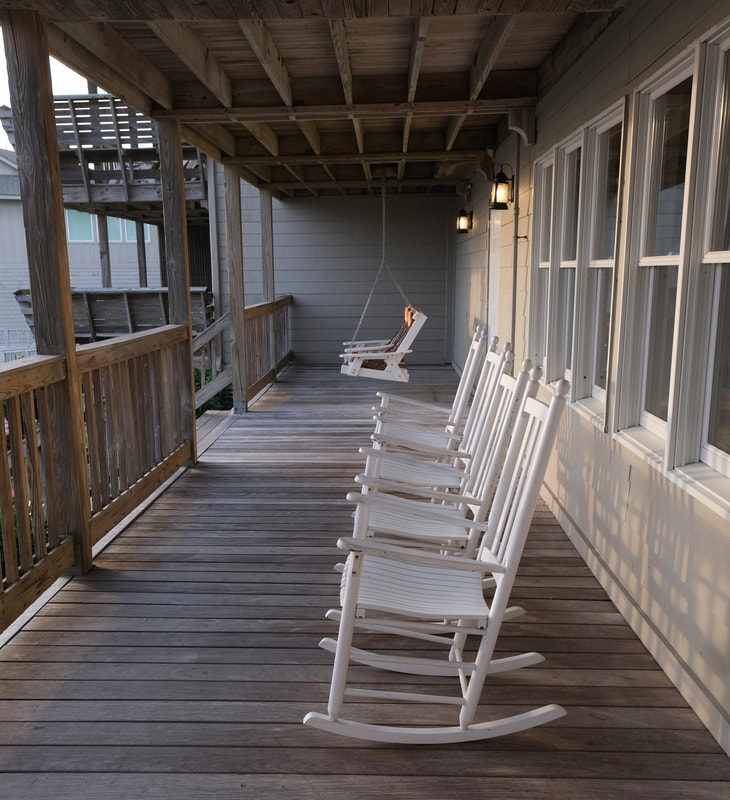
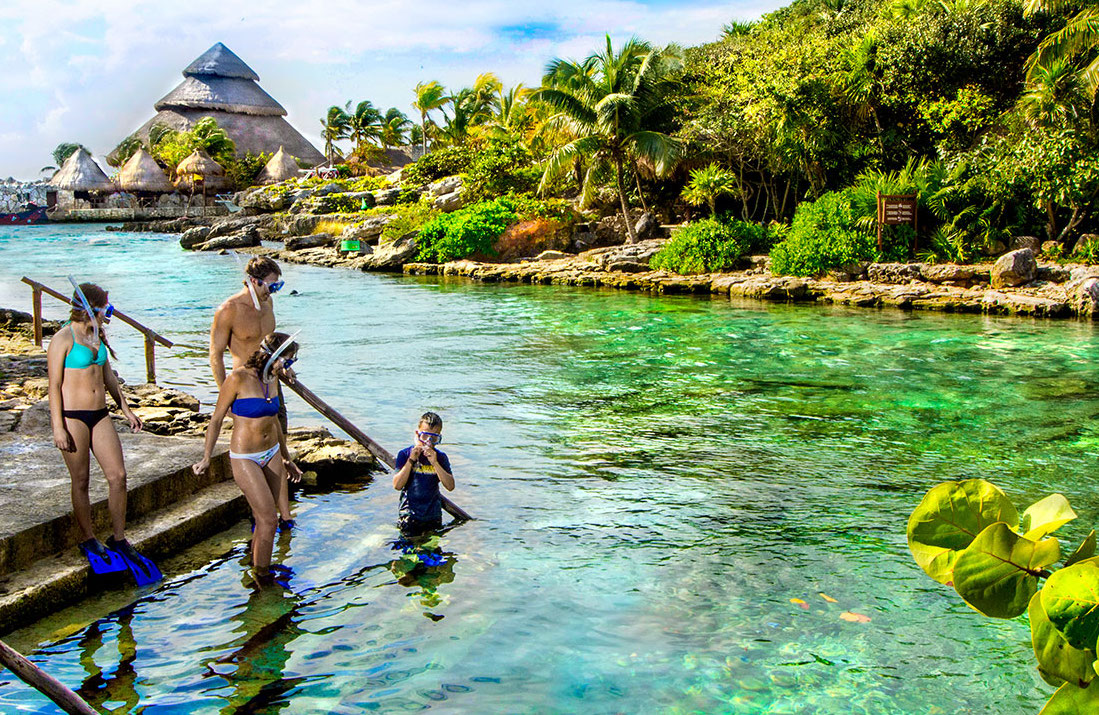
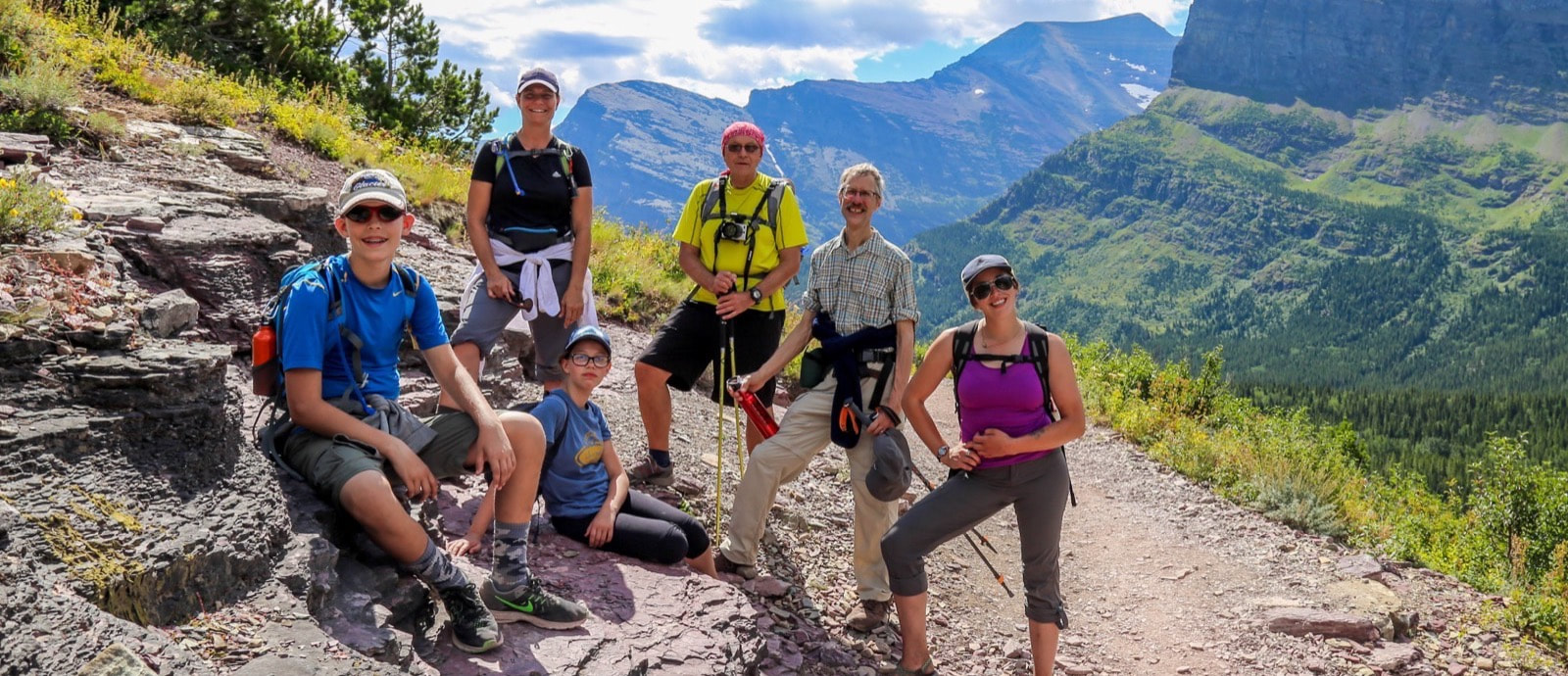
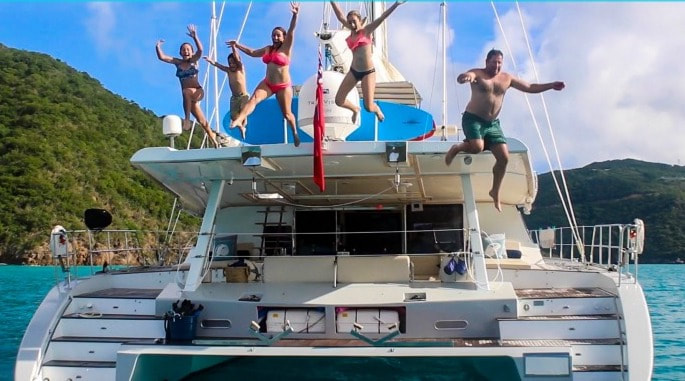
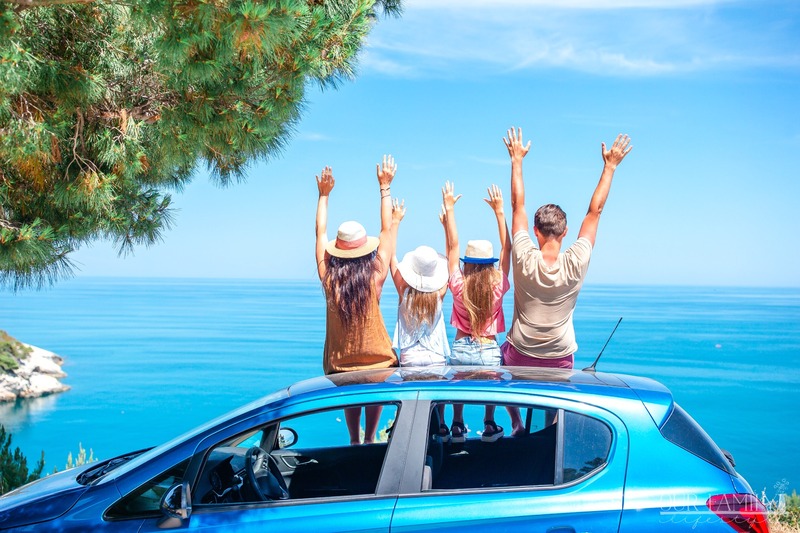
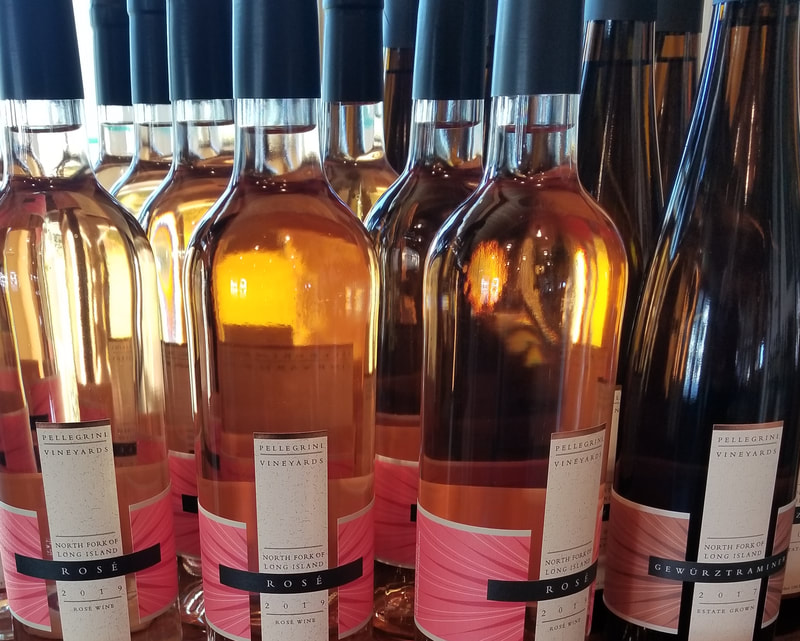
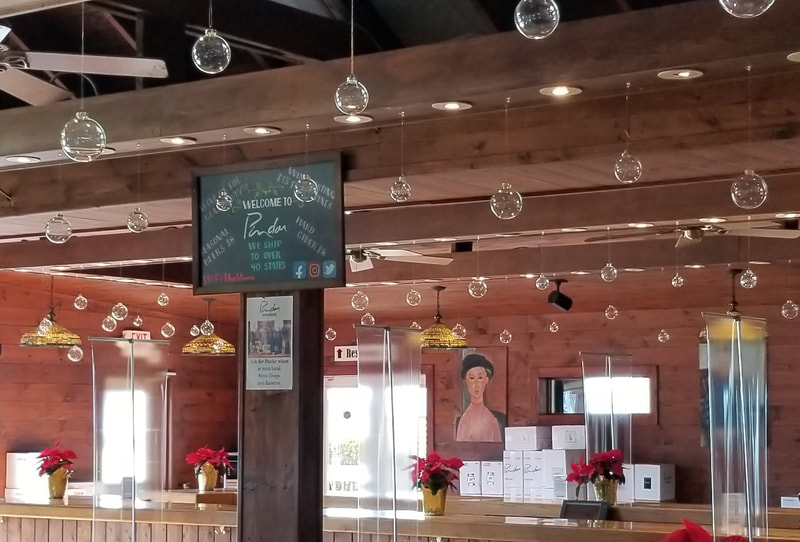
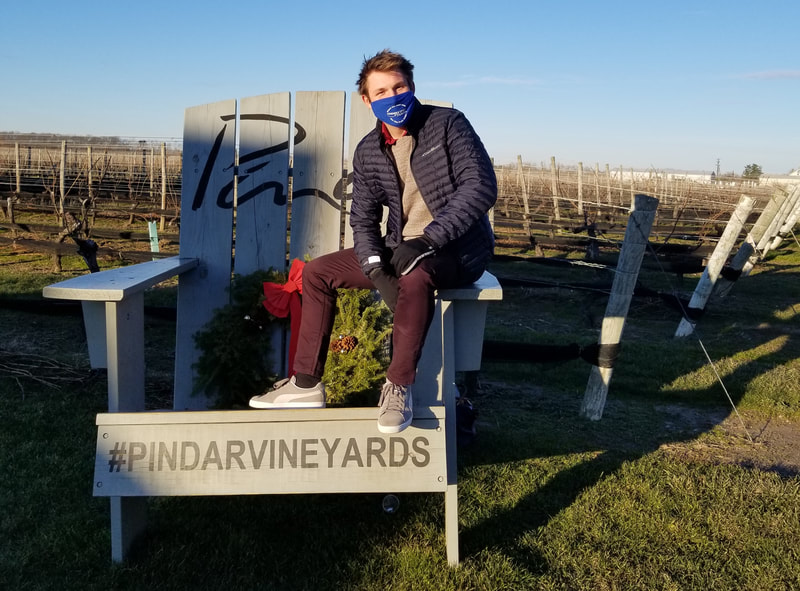
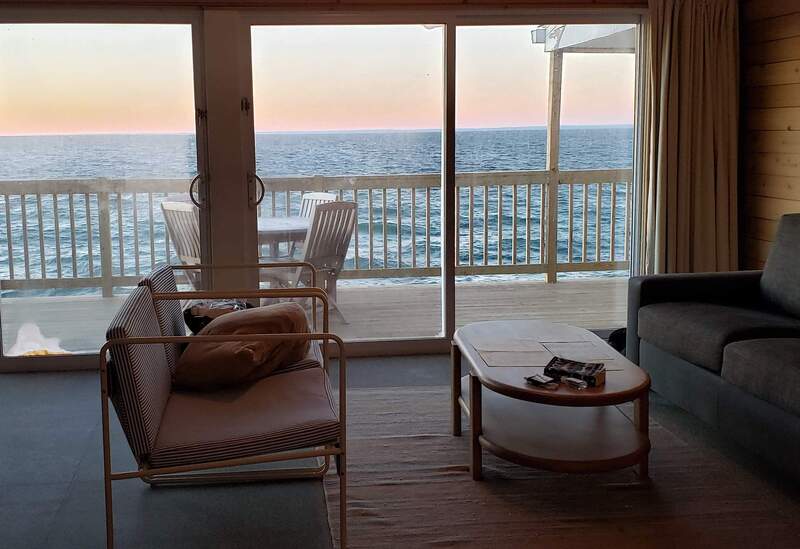
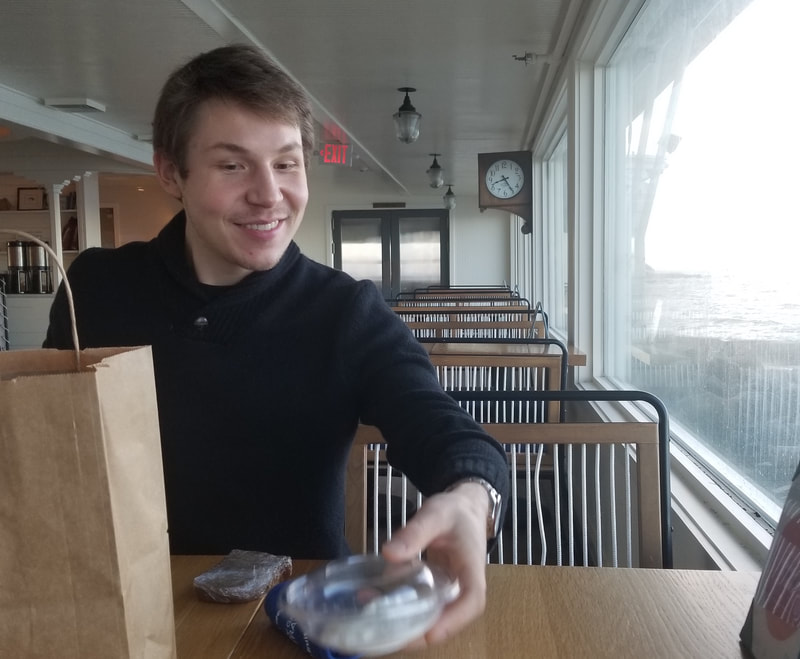
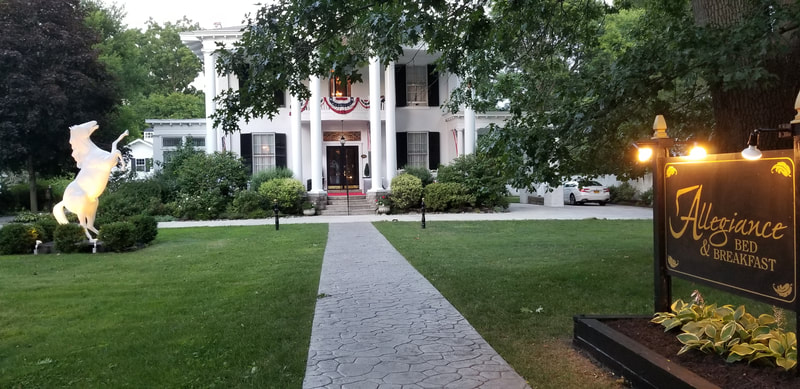
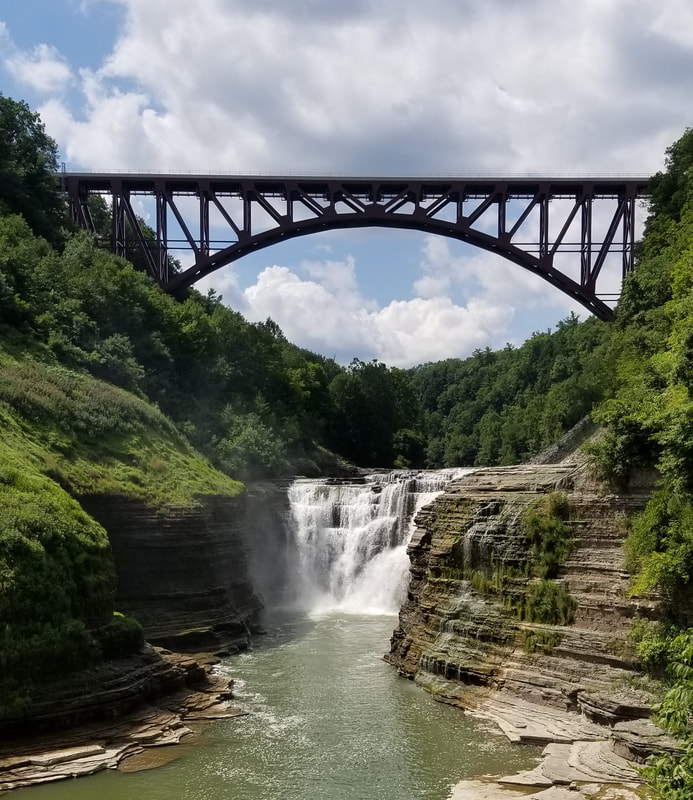
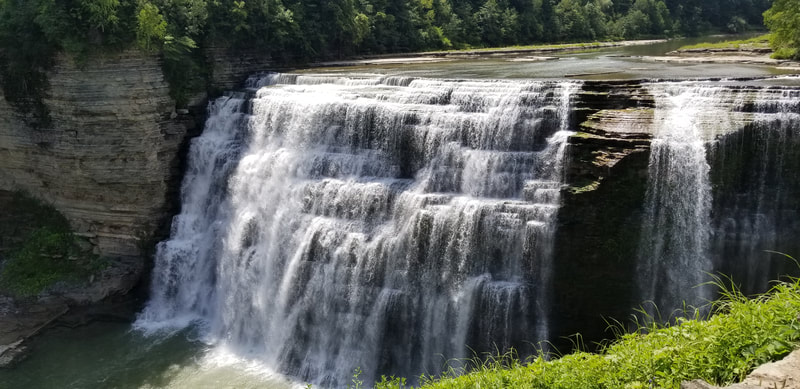
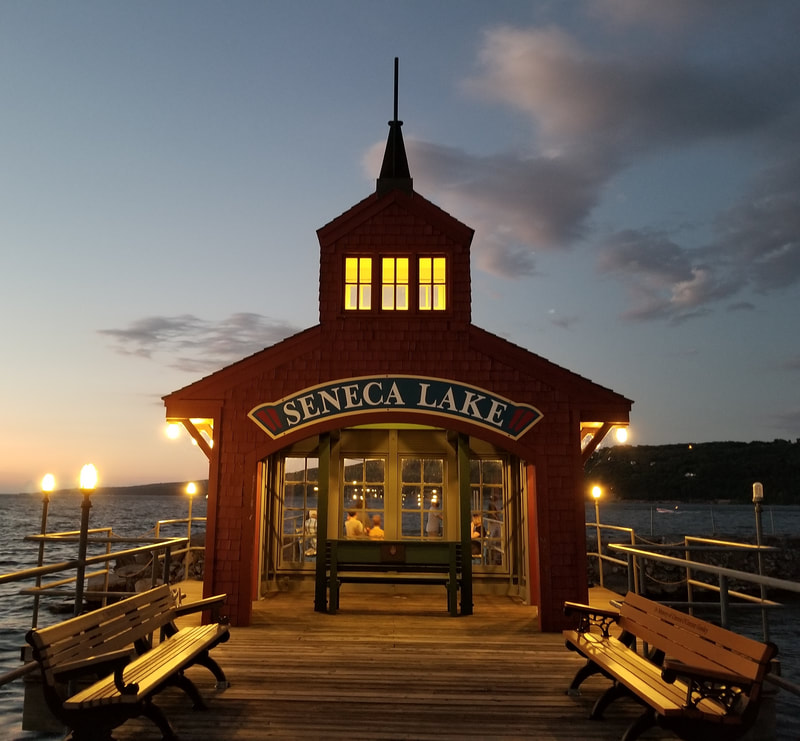
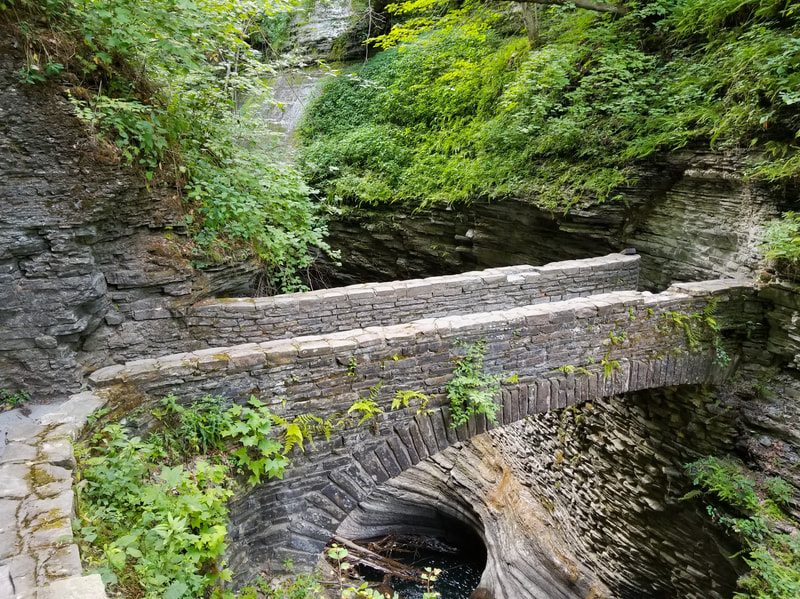
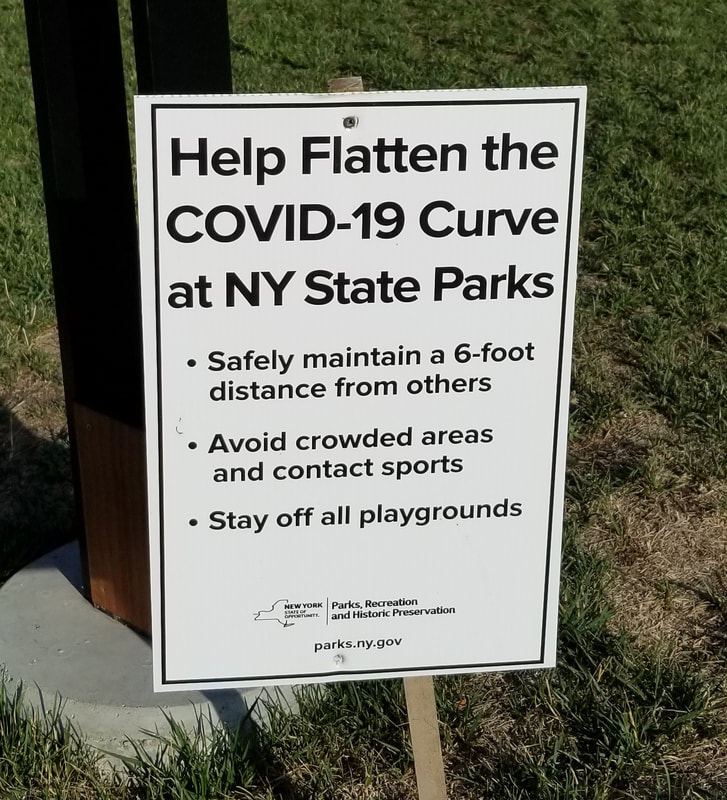

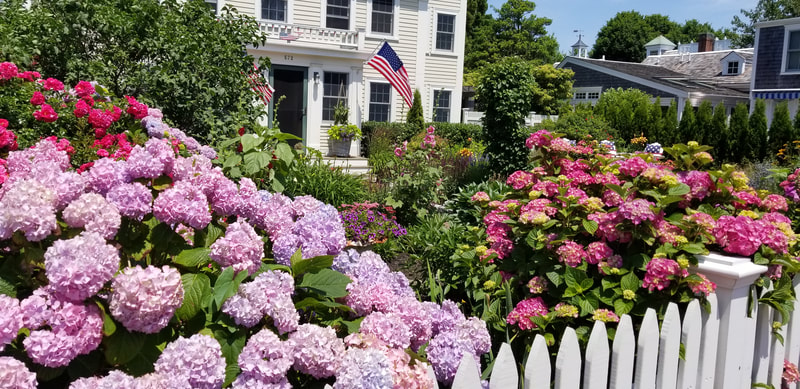
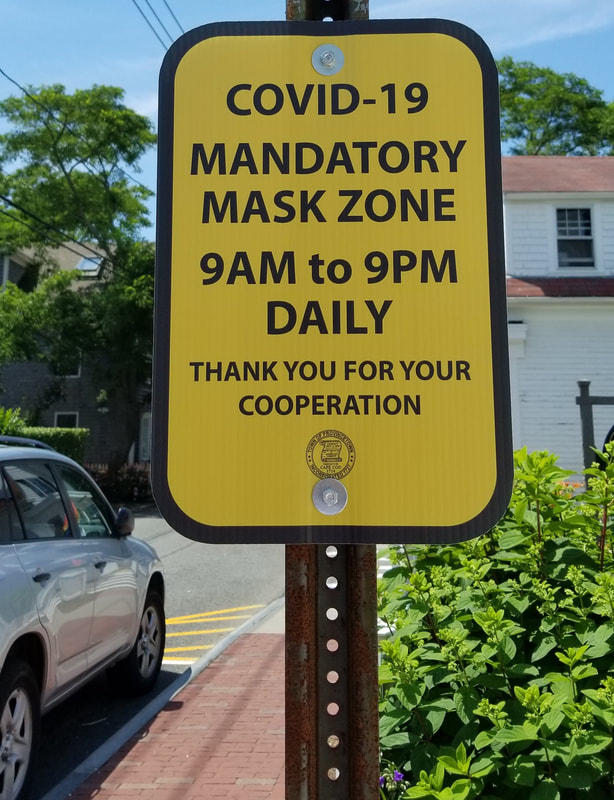
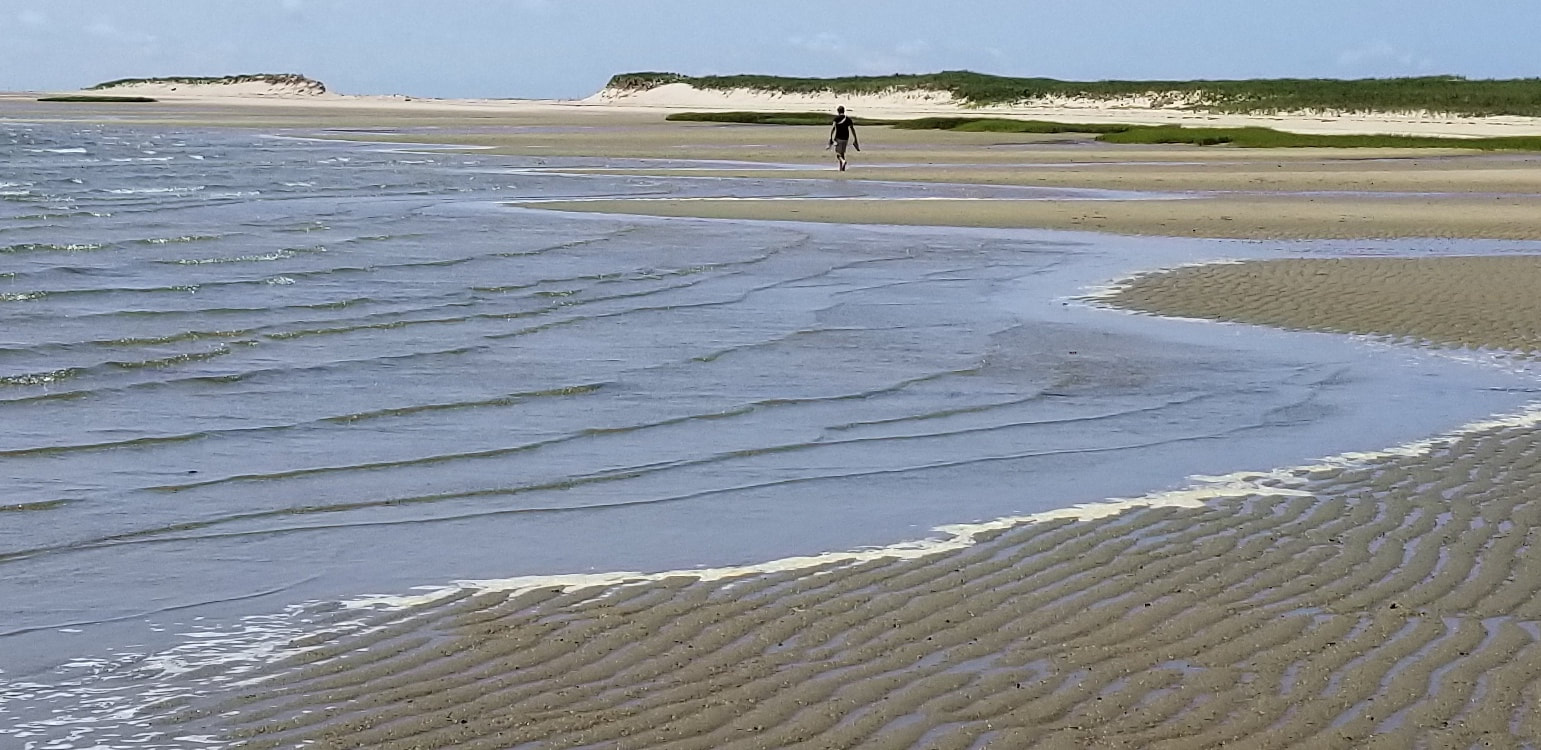
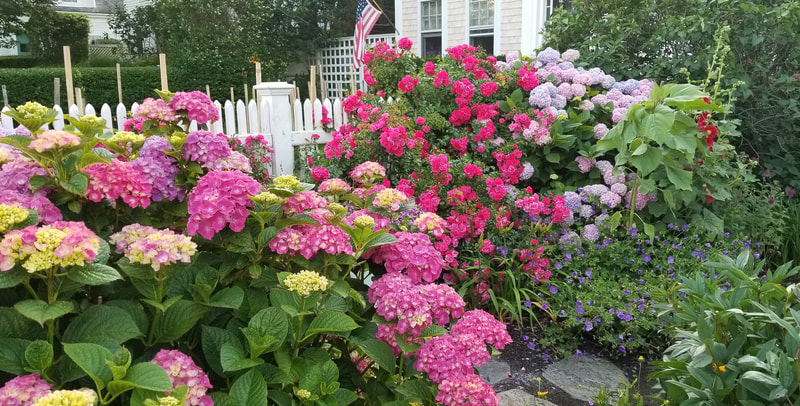
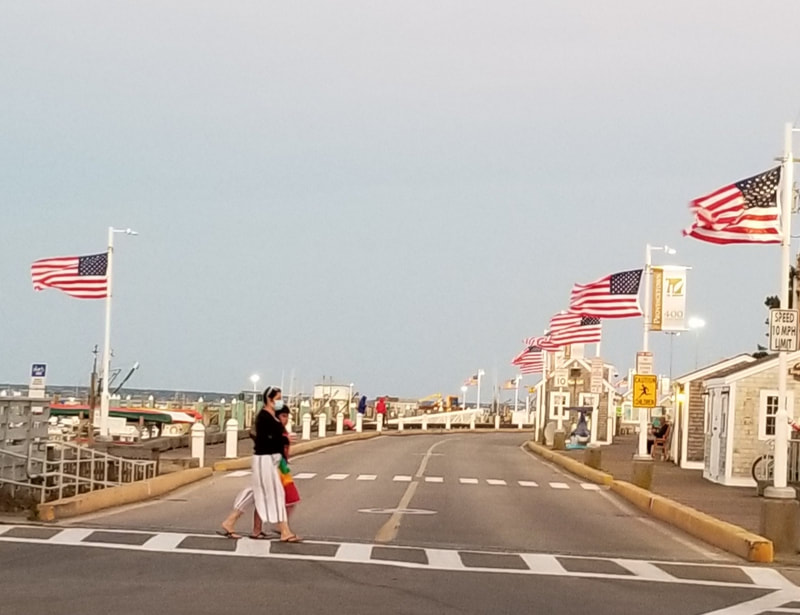
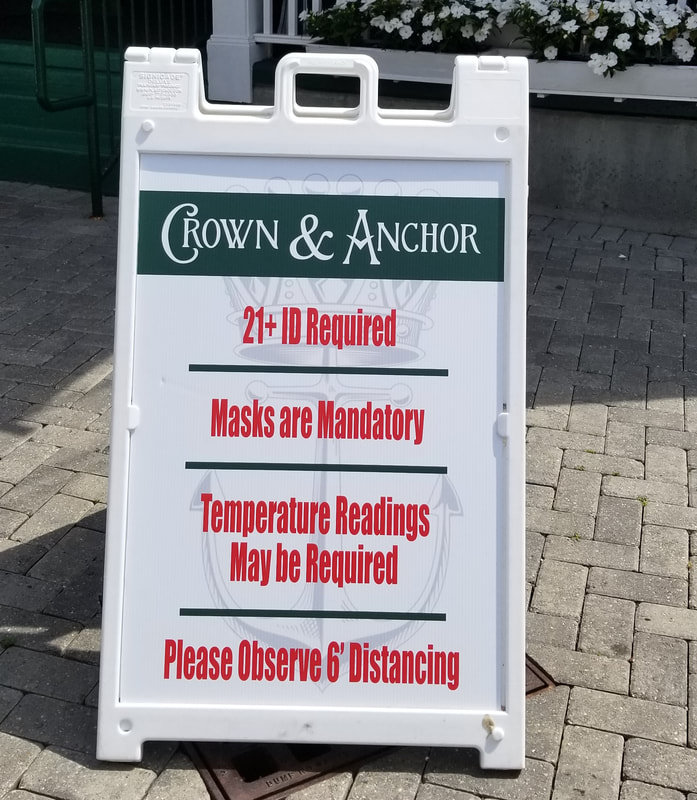

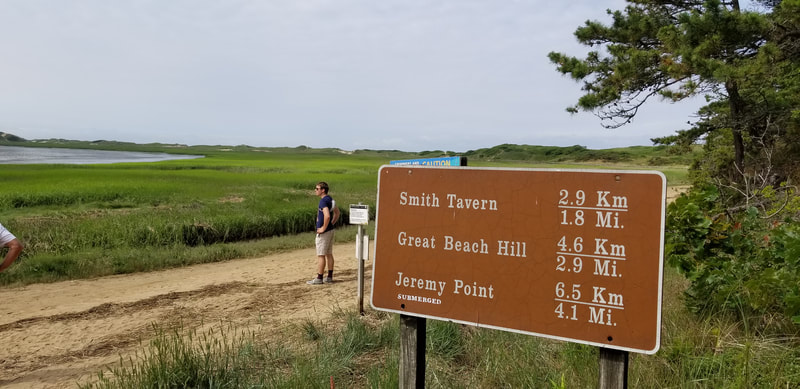
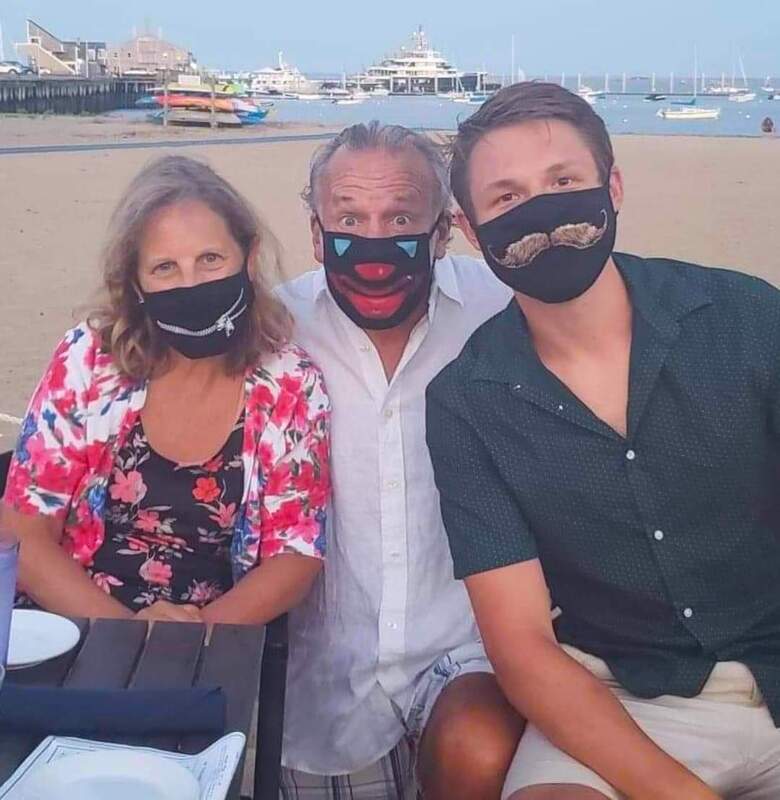
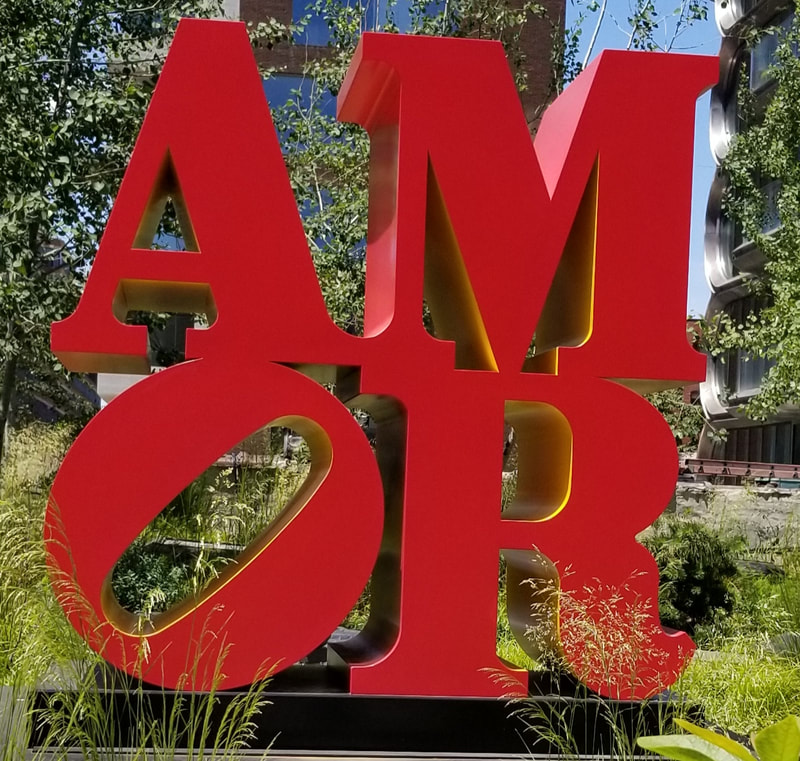
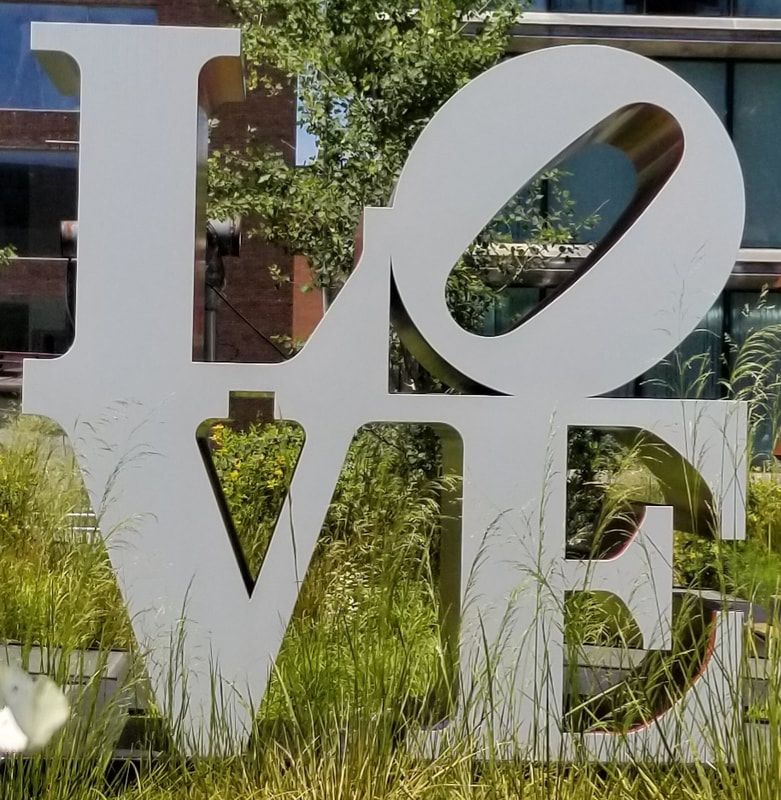
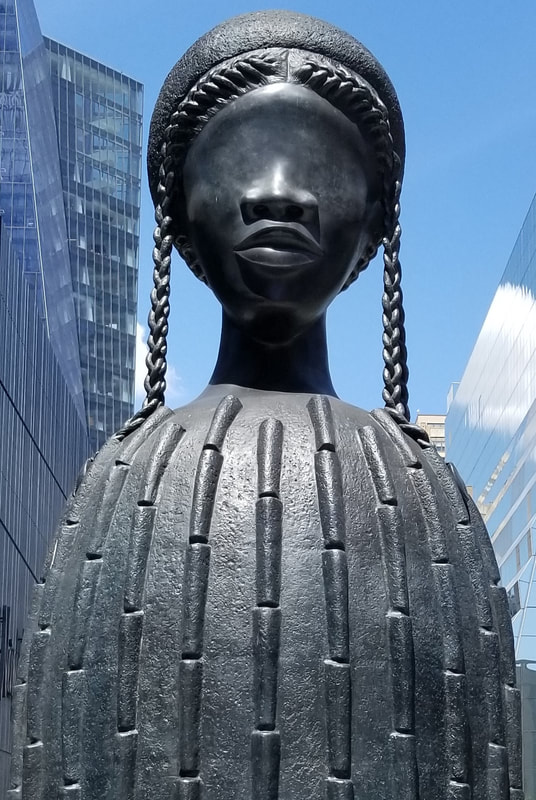
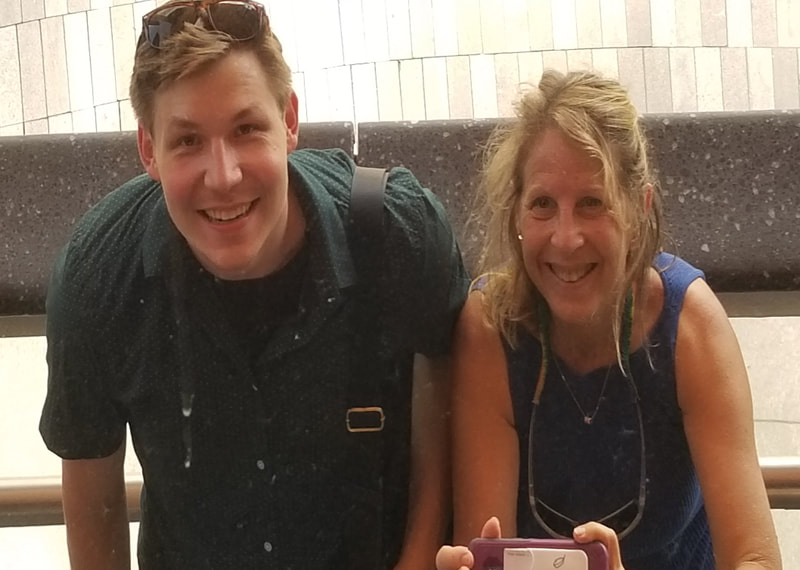
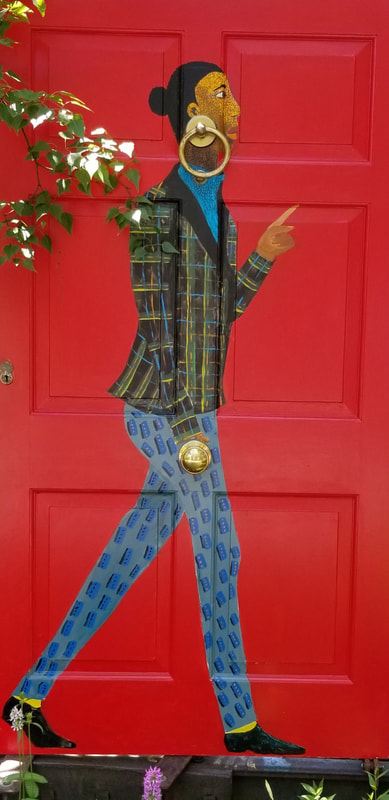
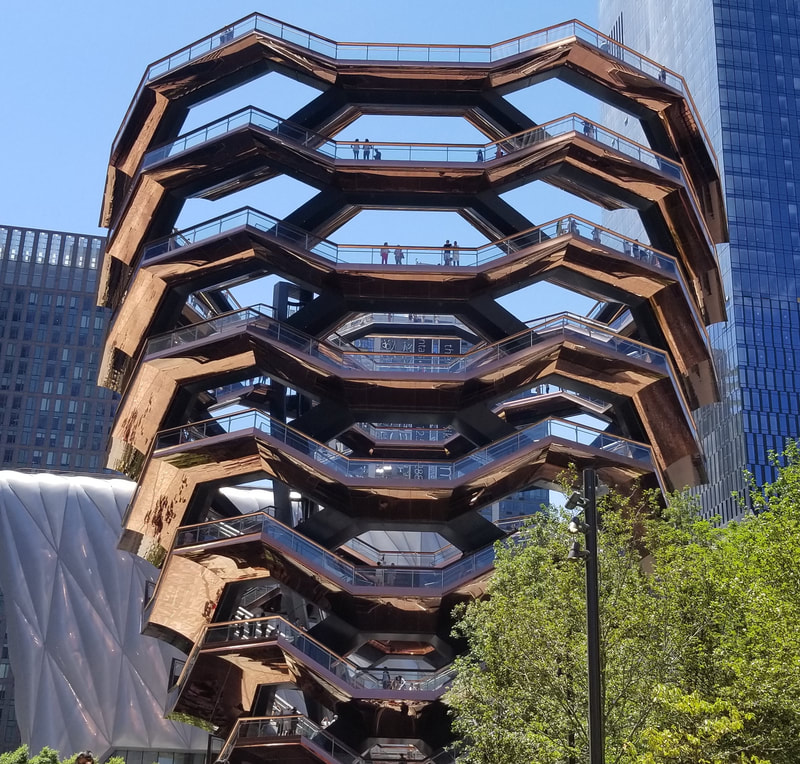
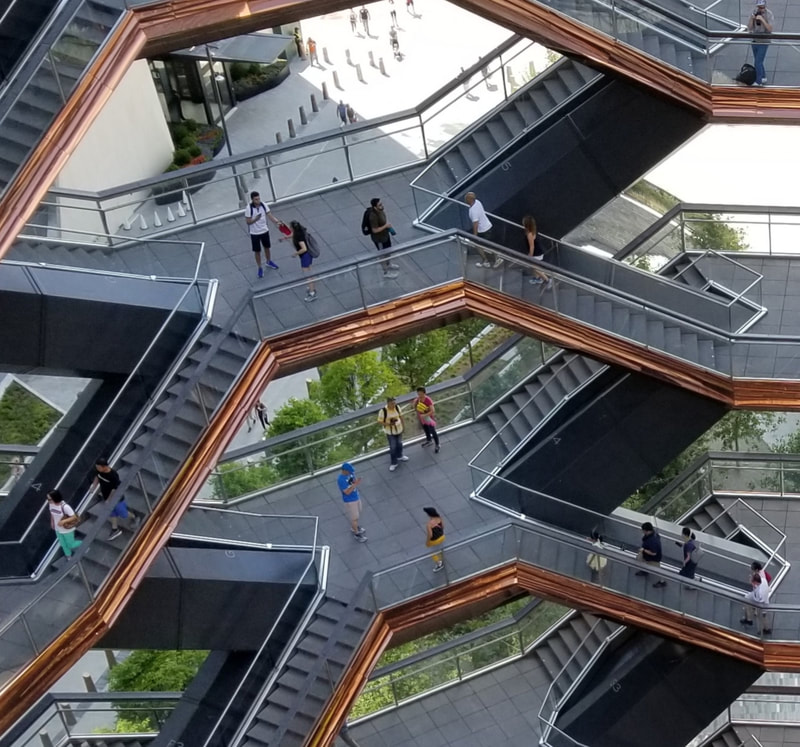
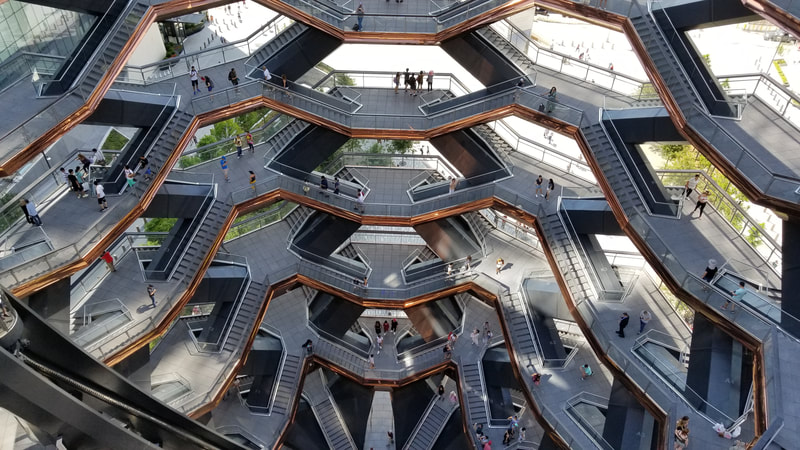
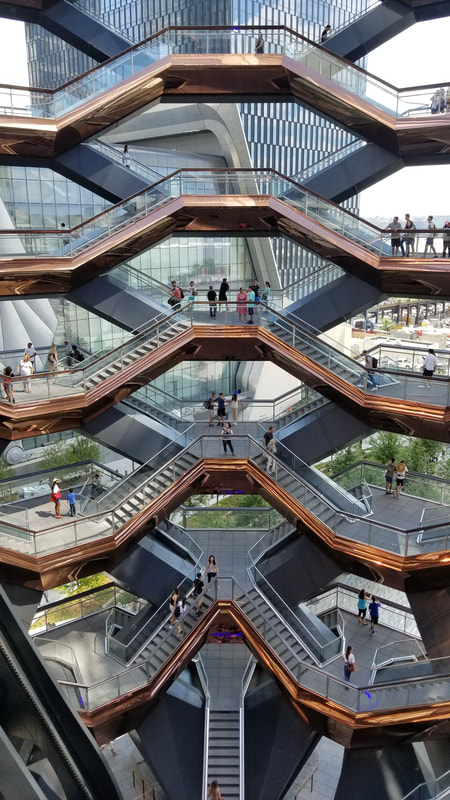
 RSS Feed
RSS Feed

